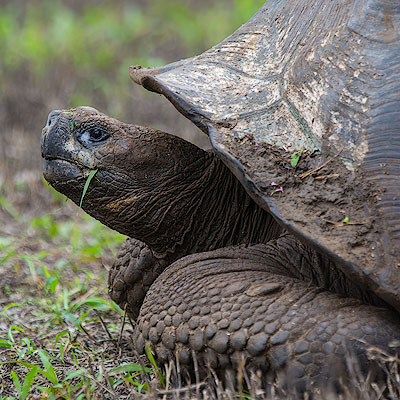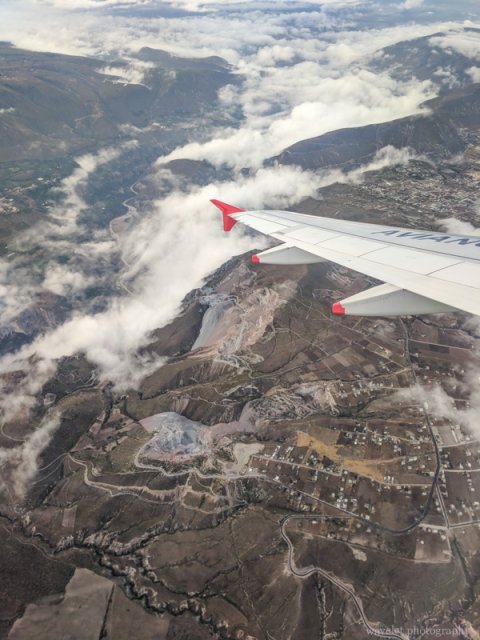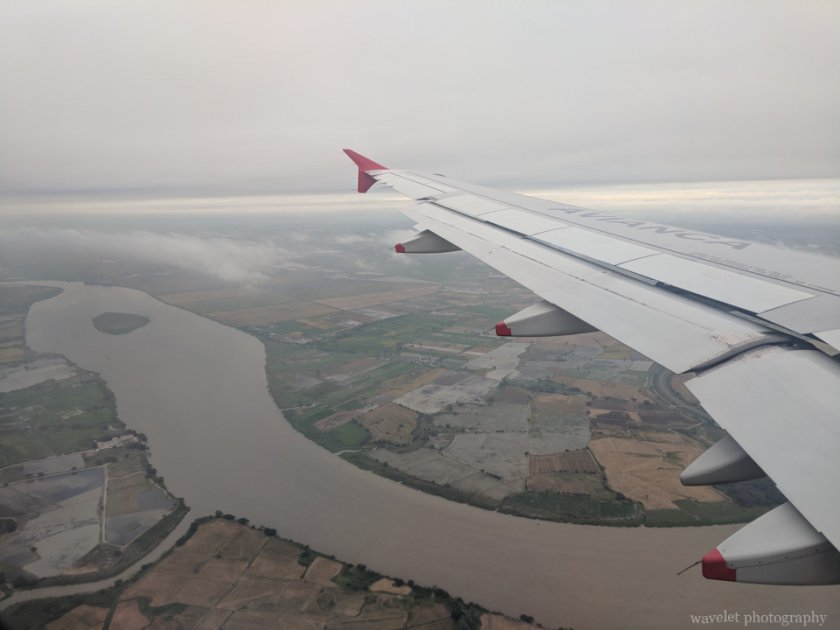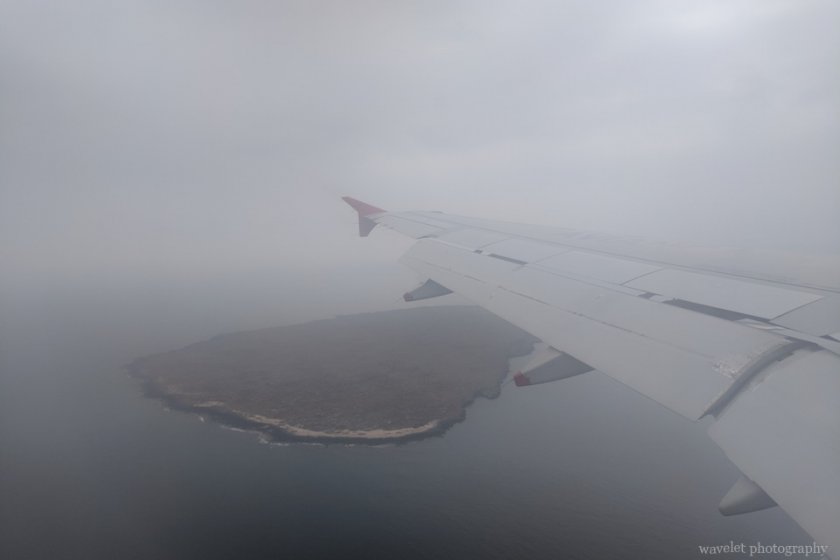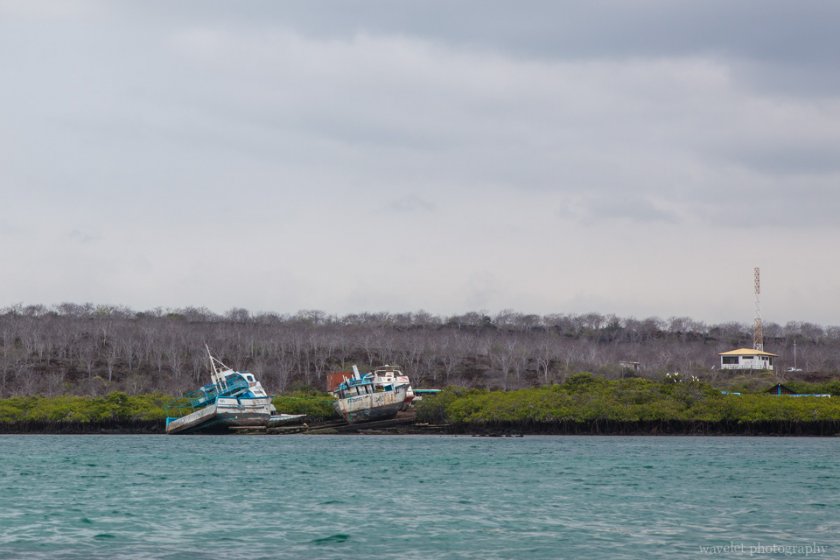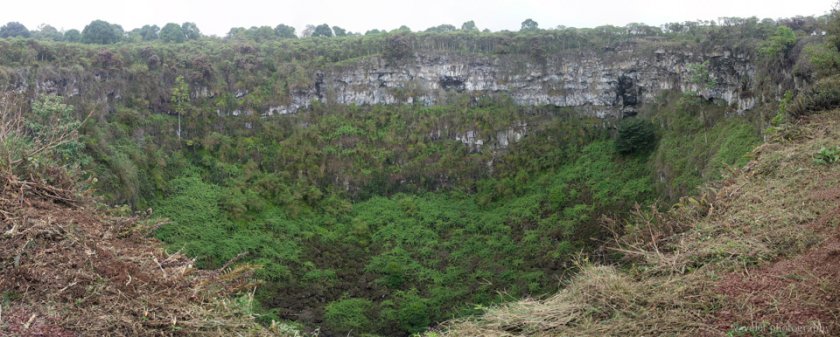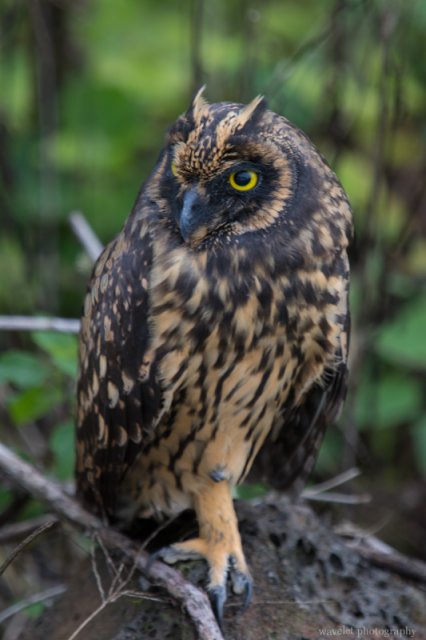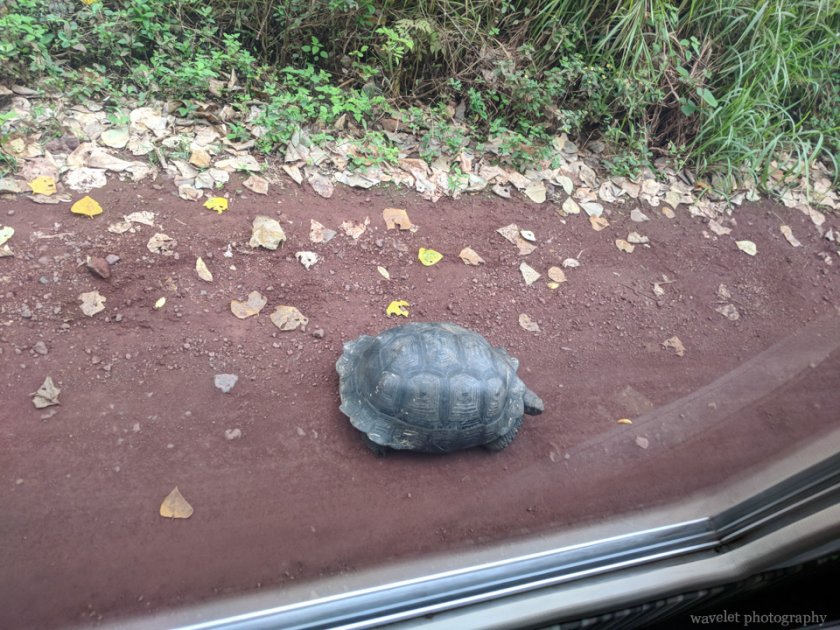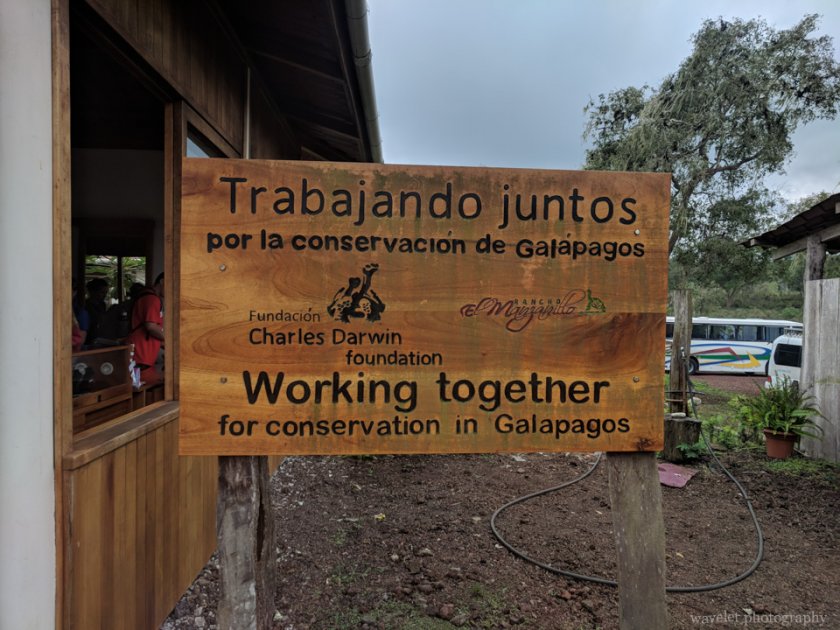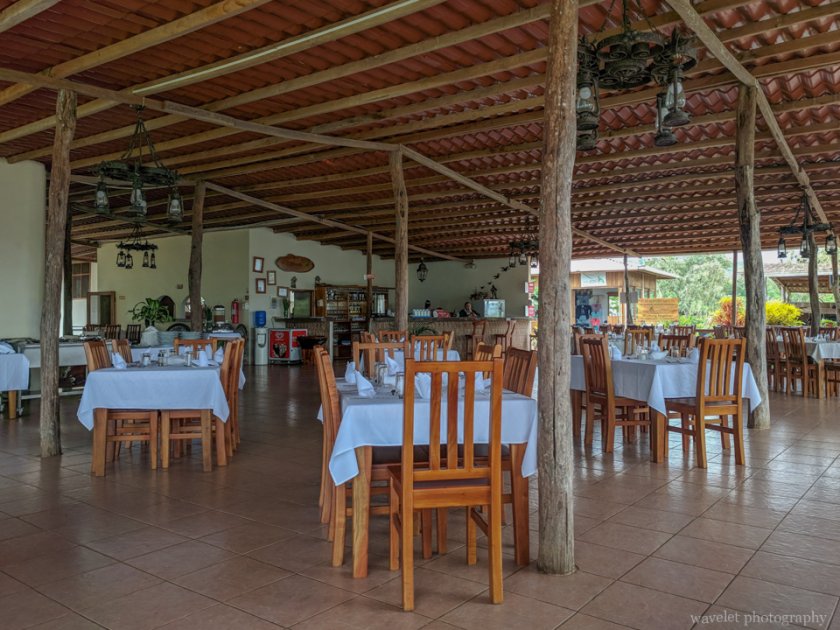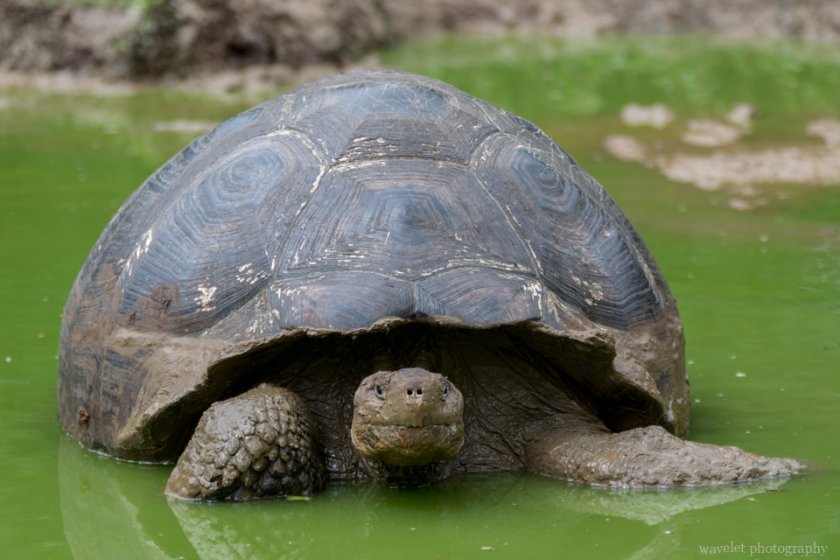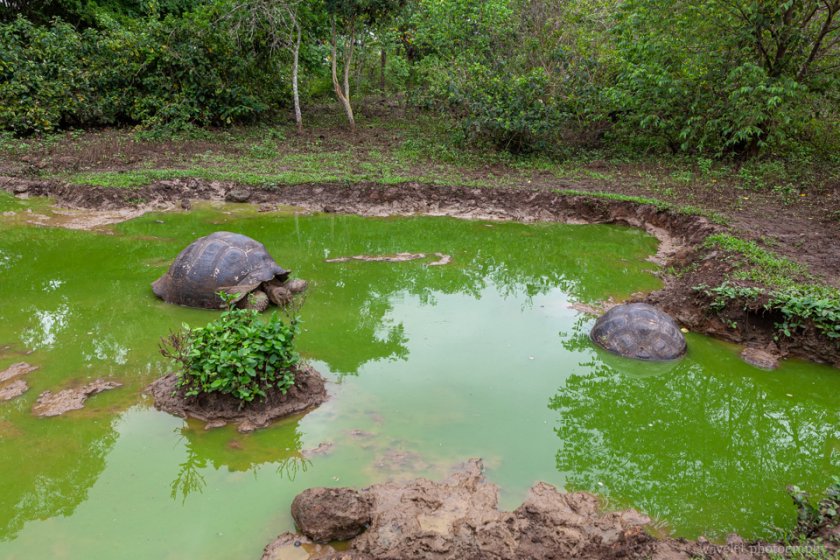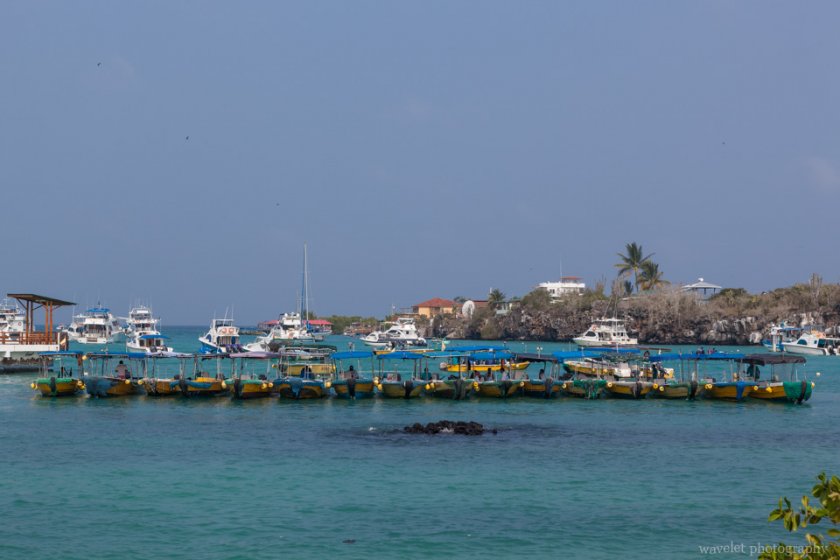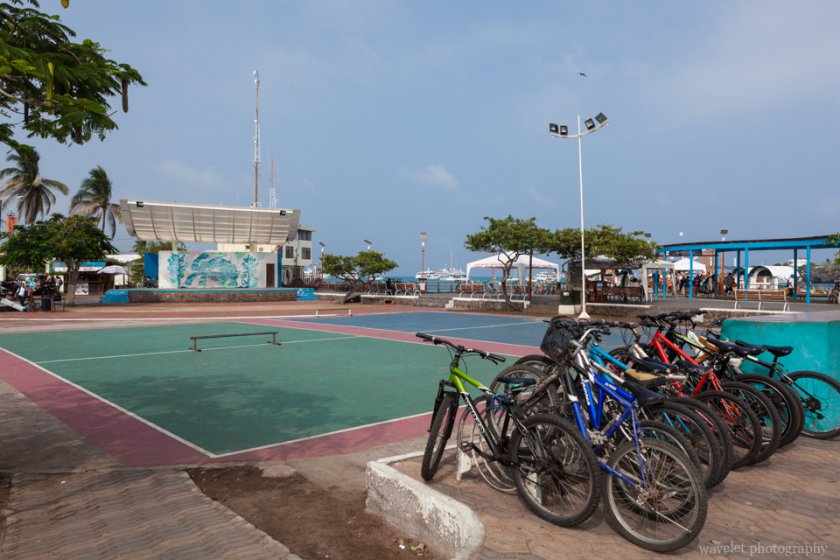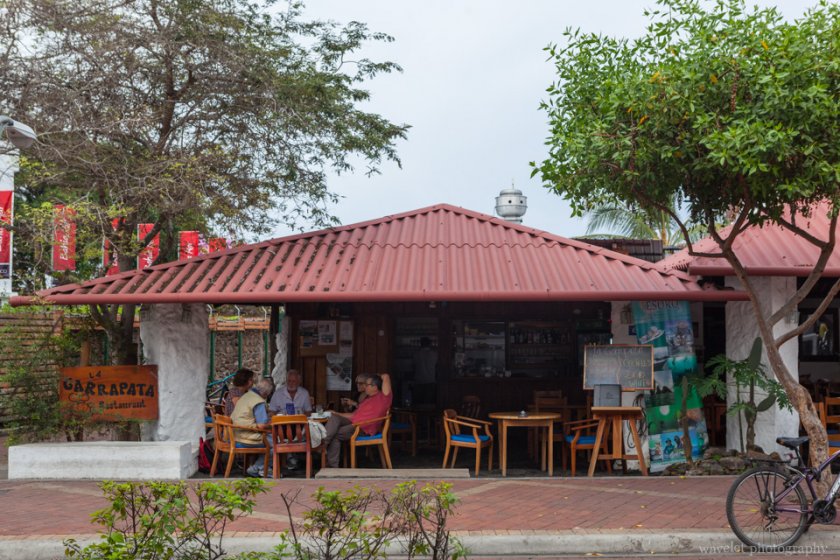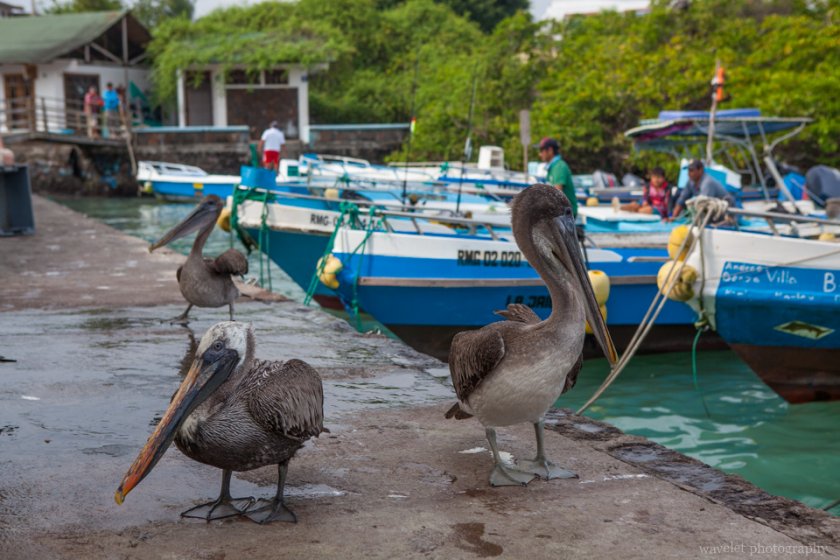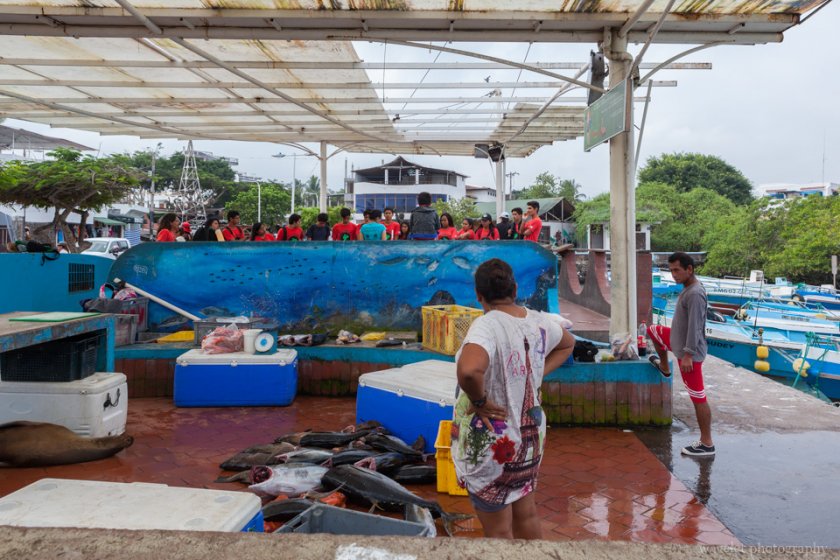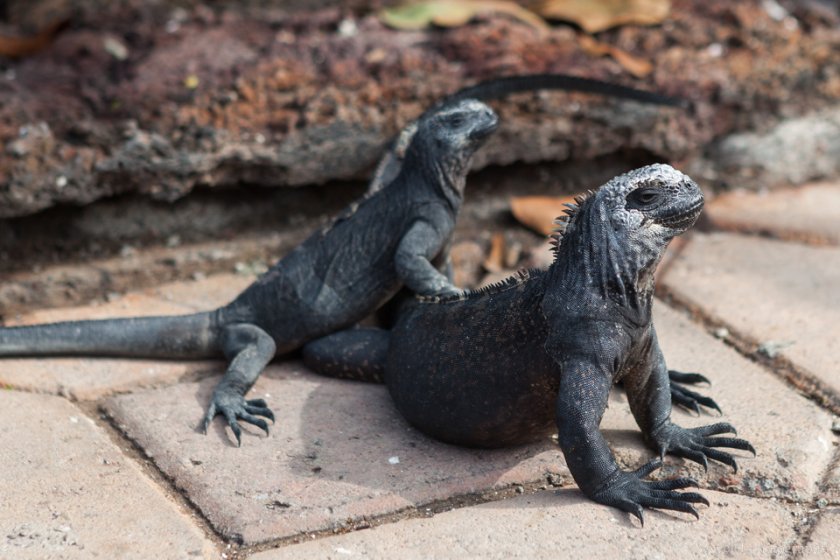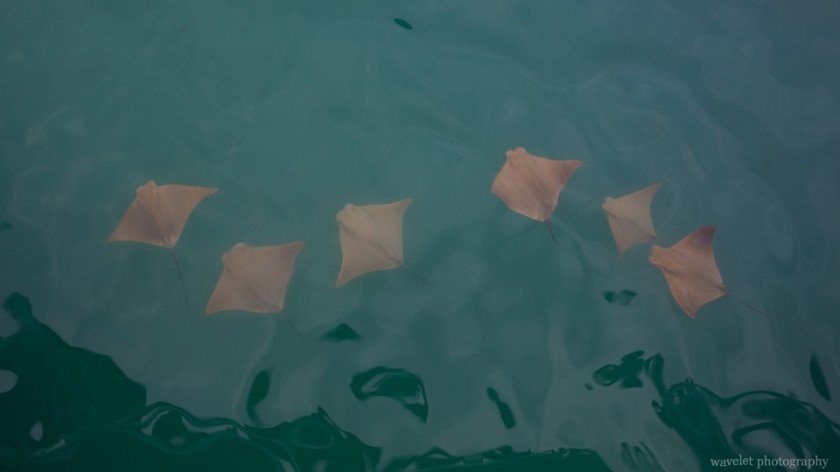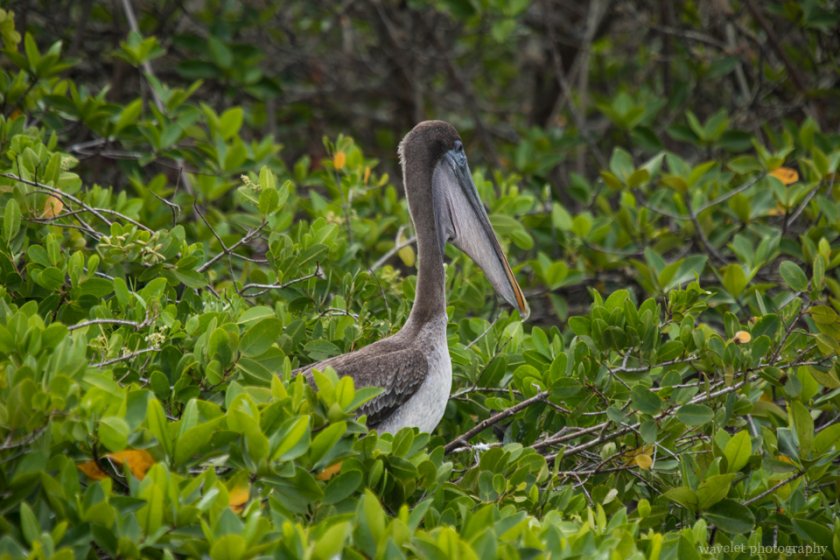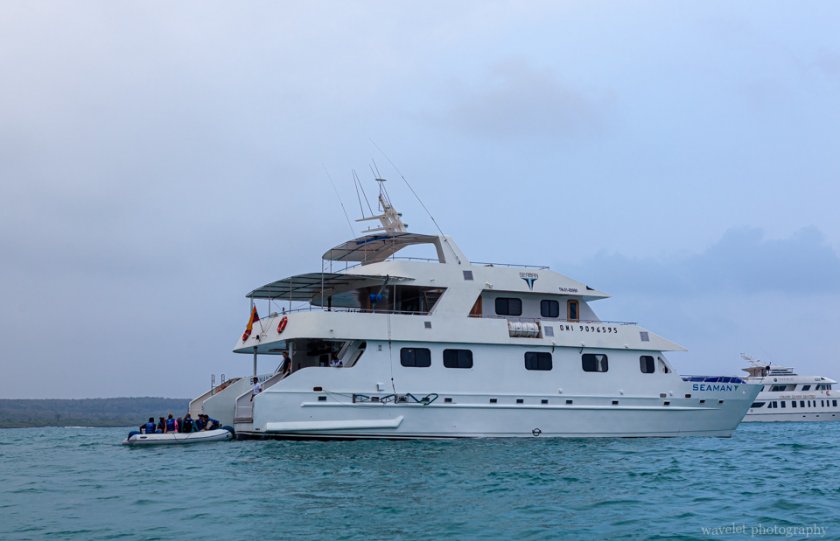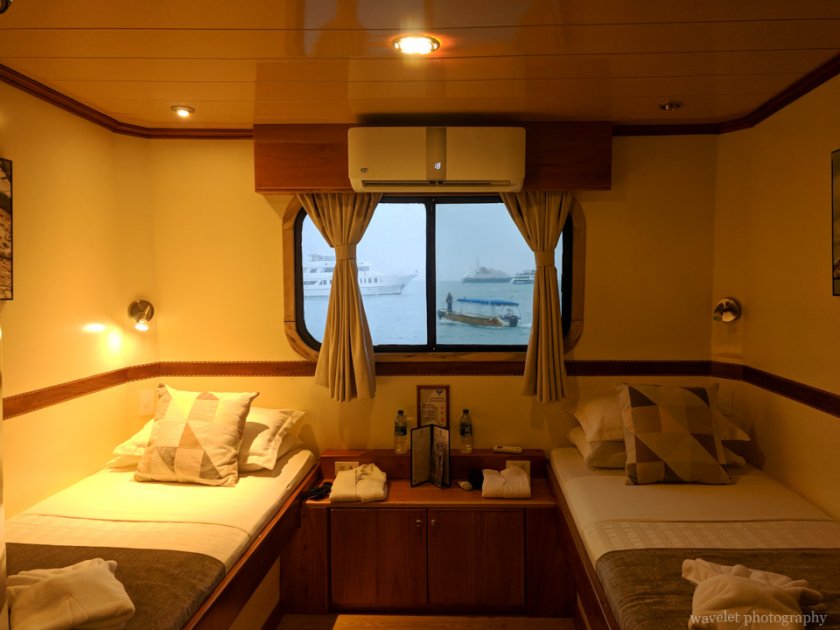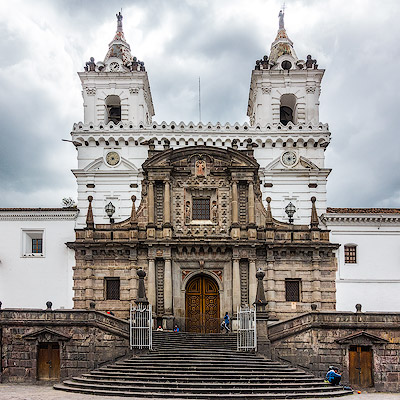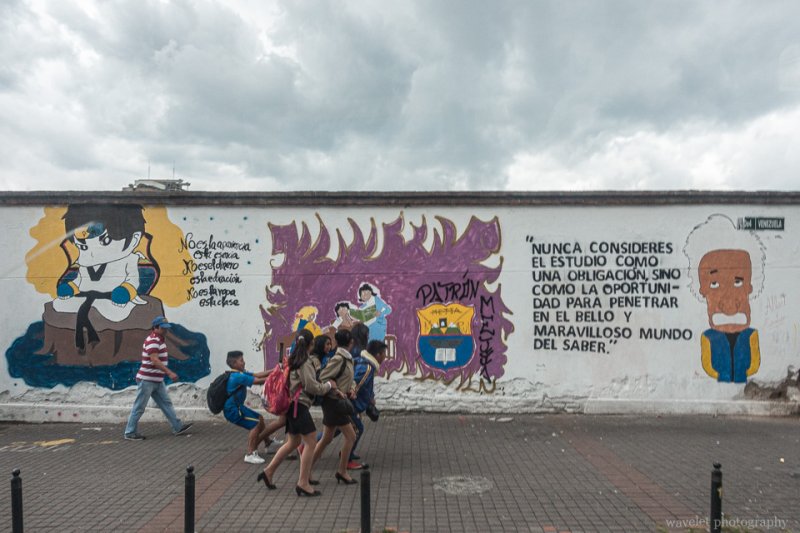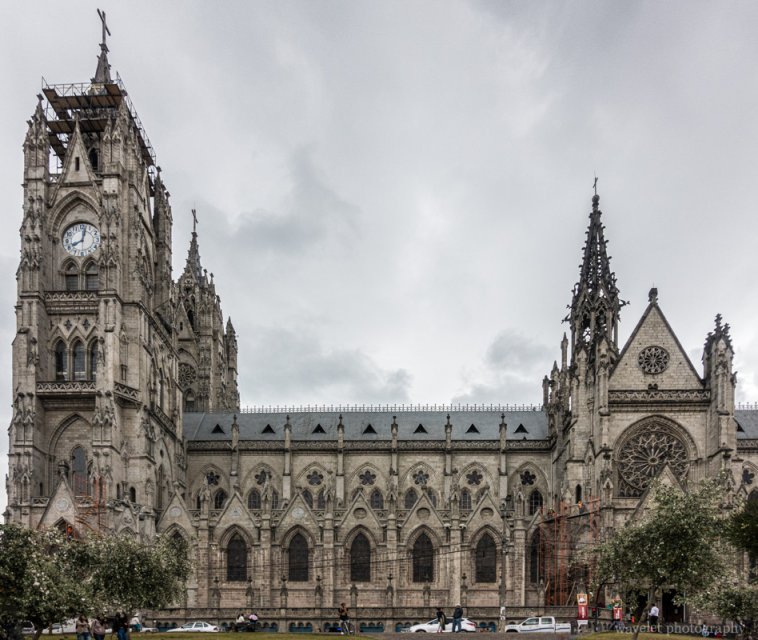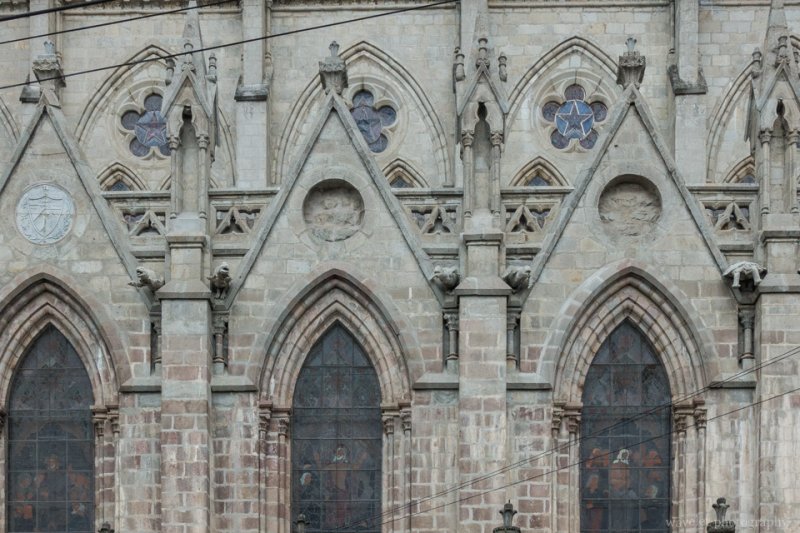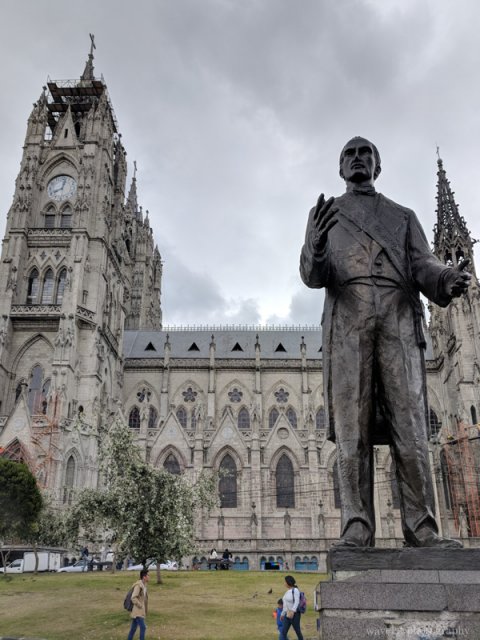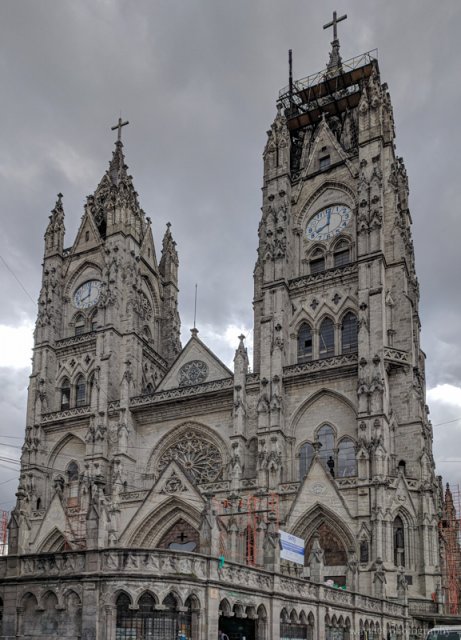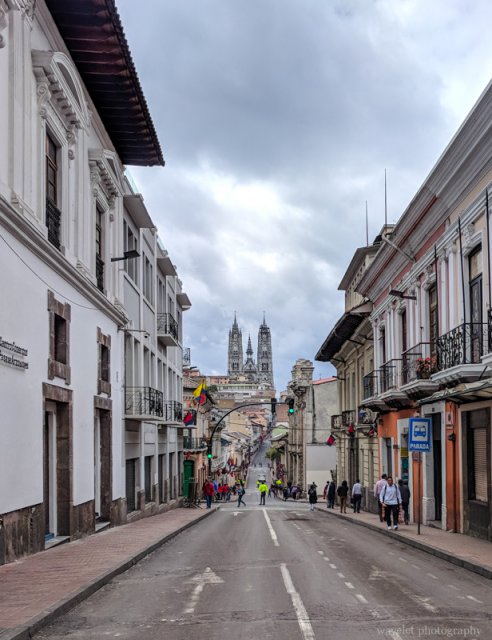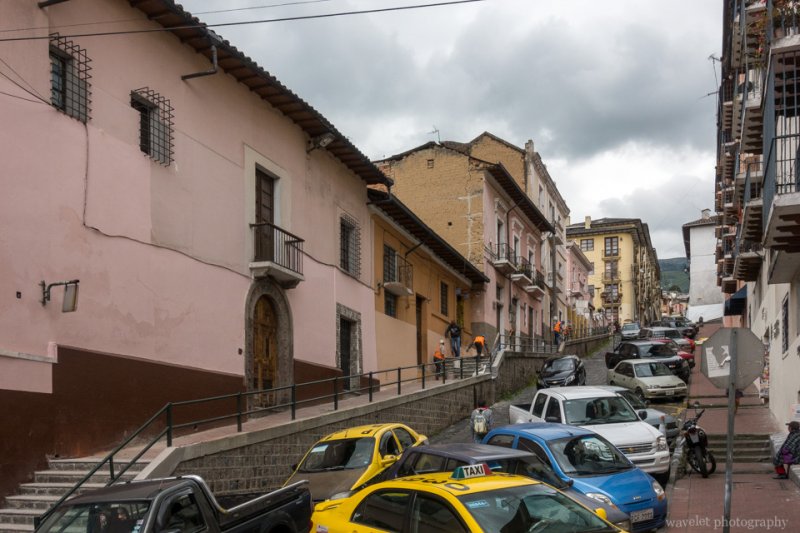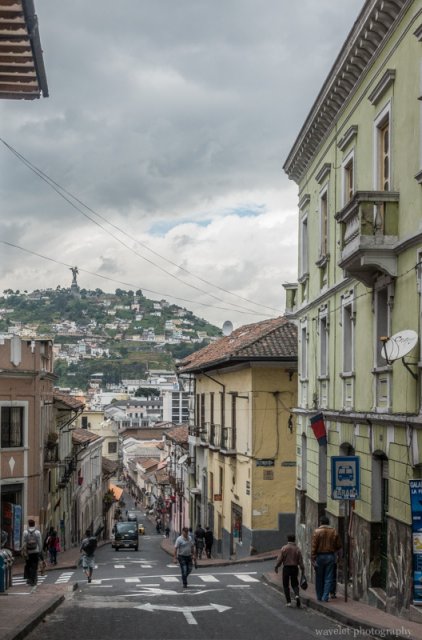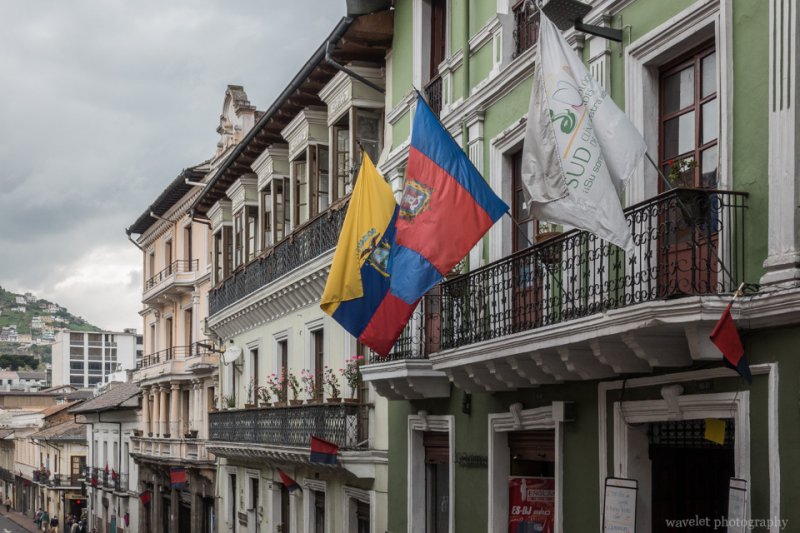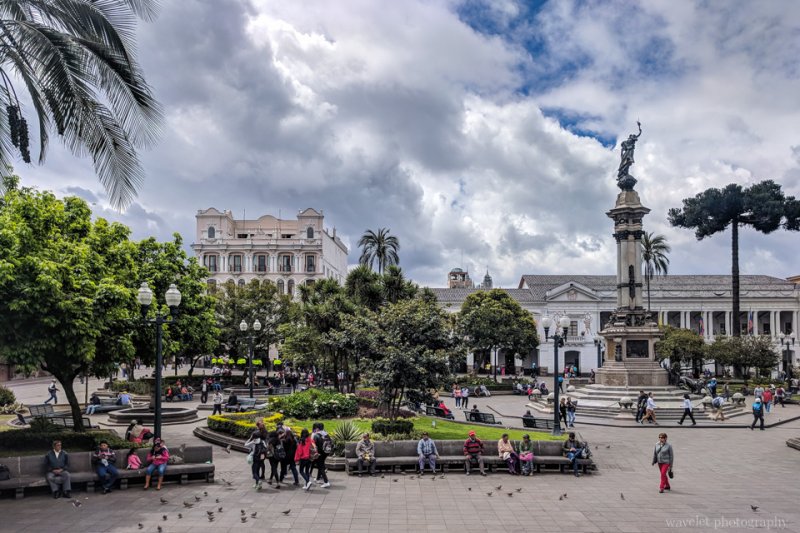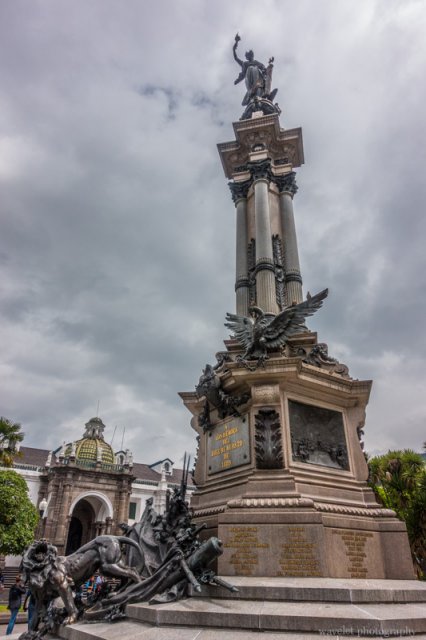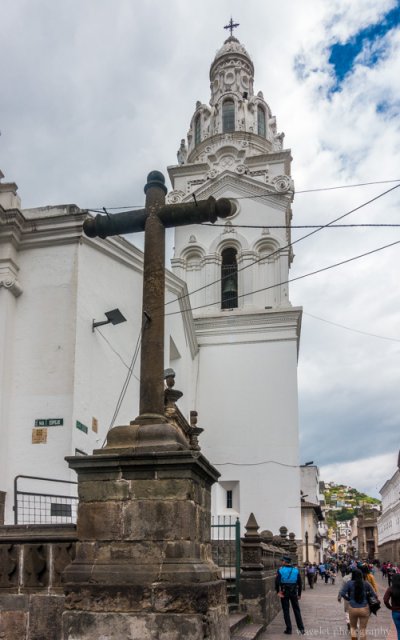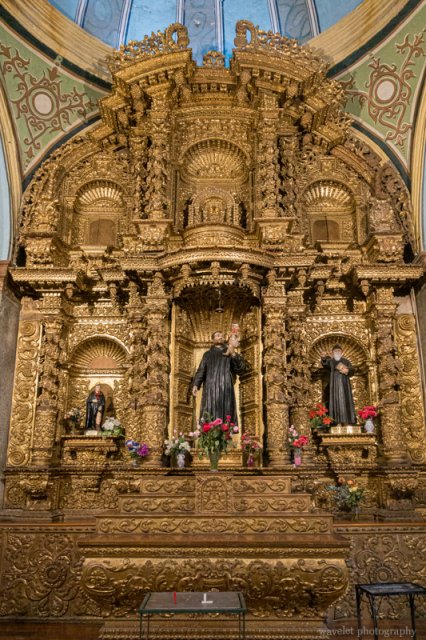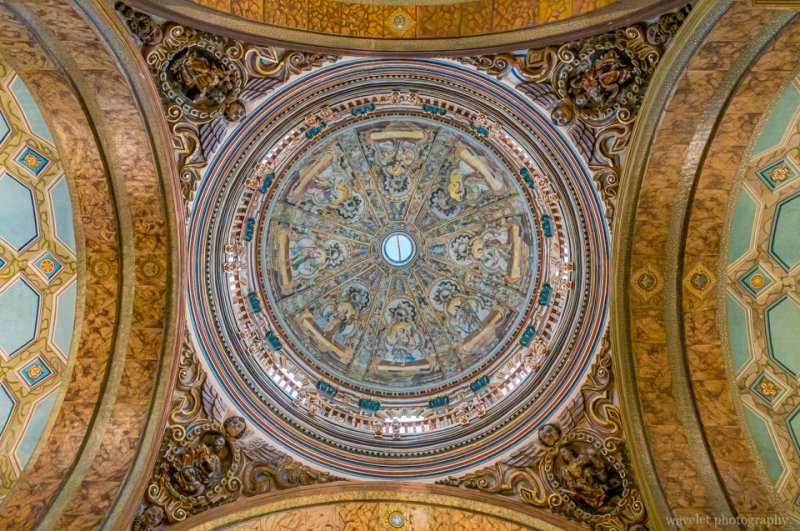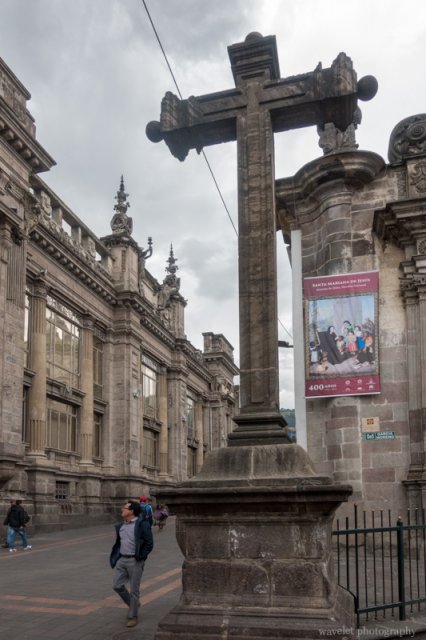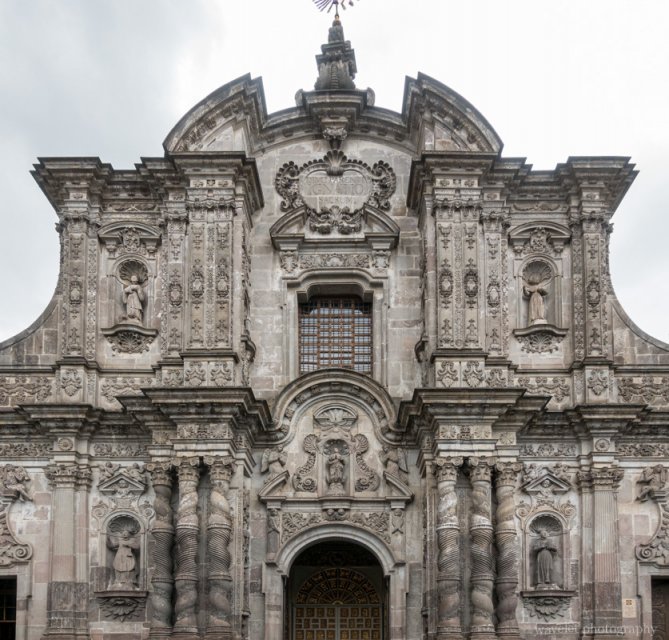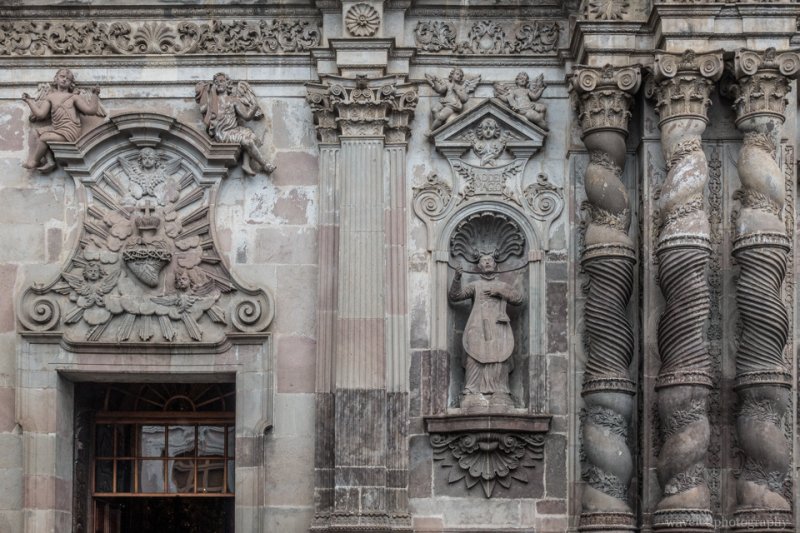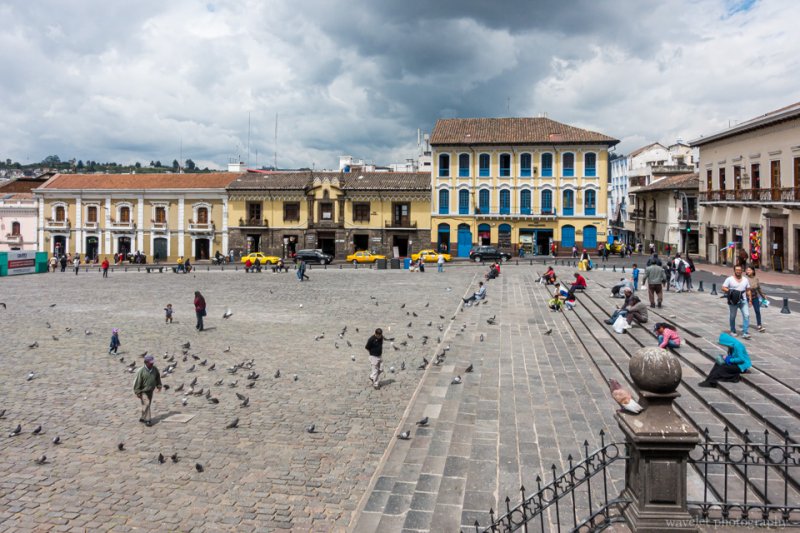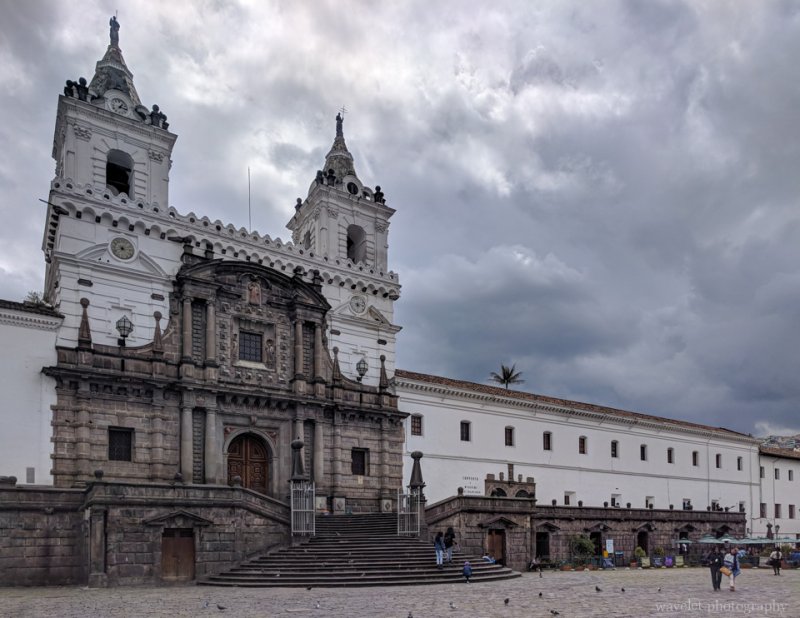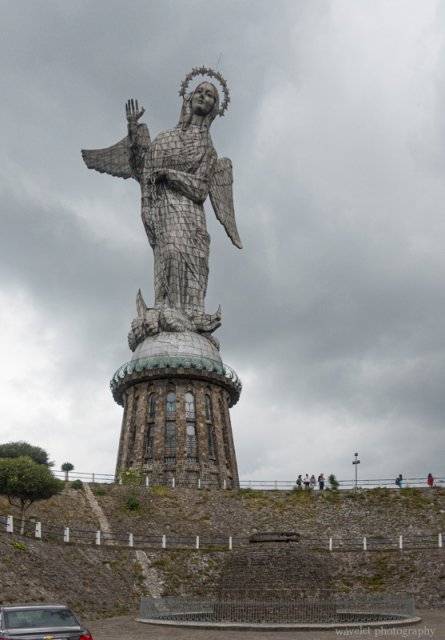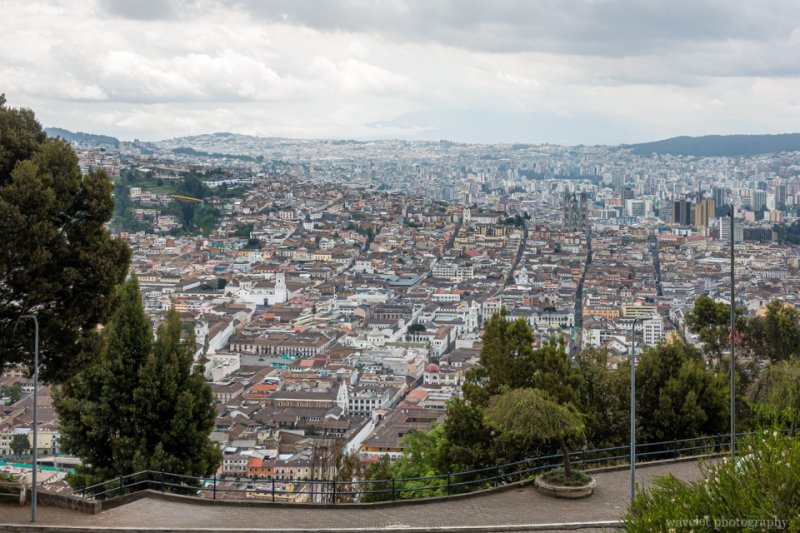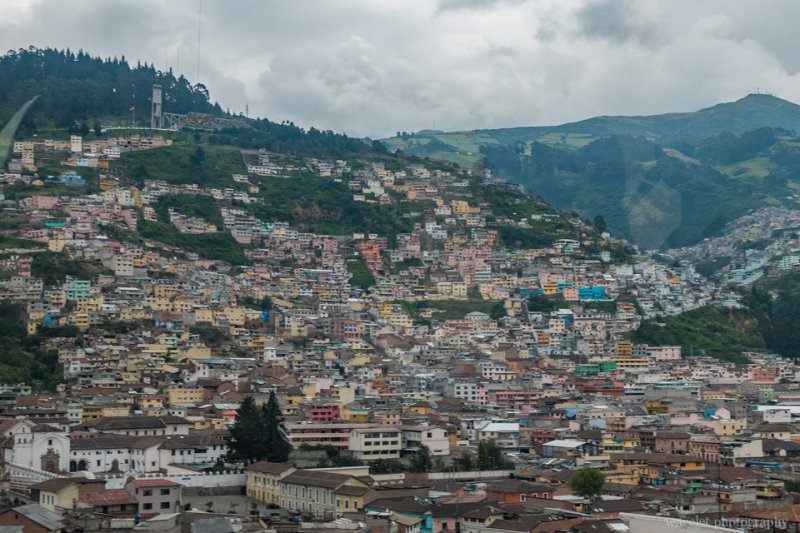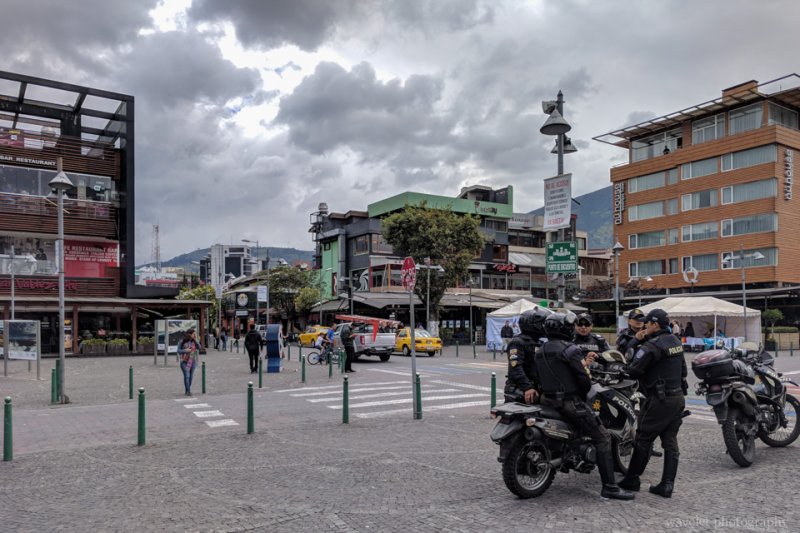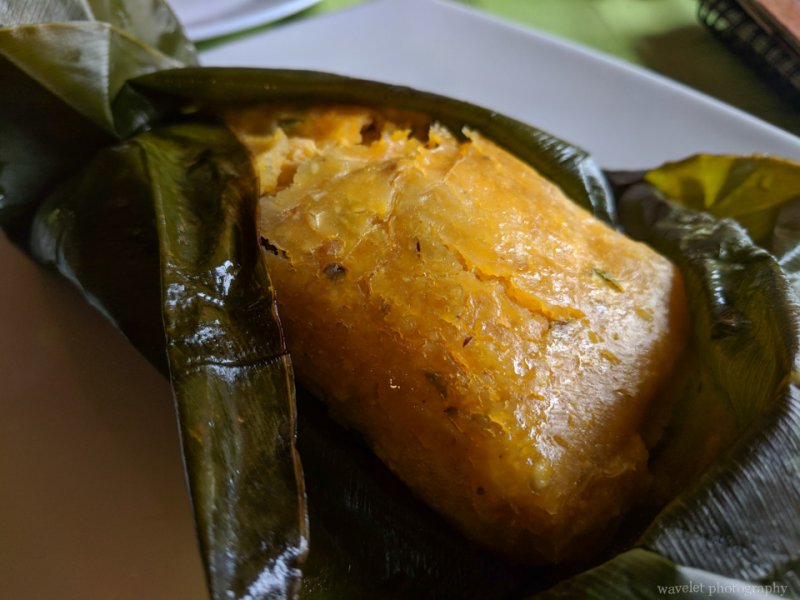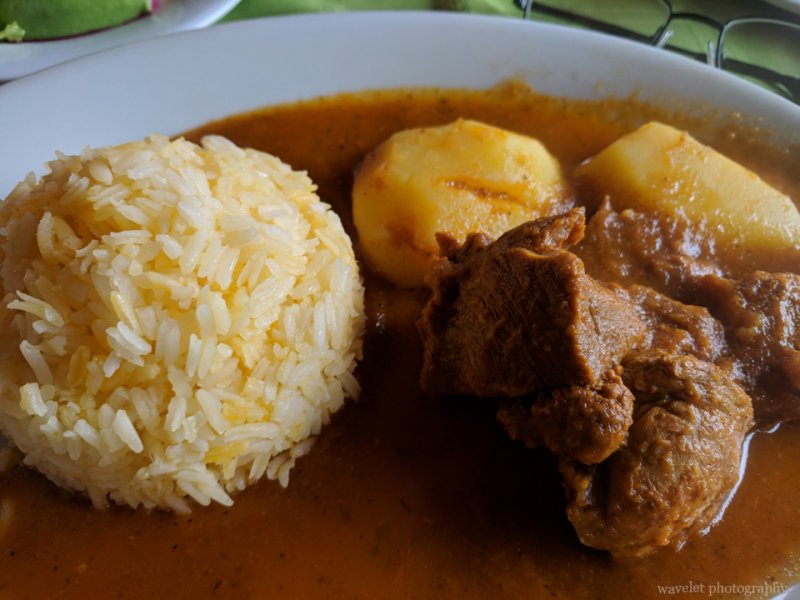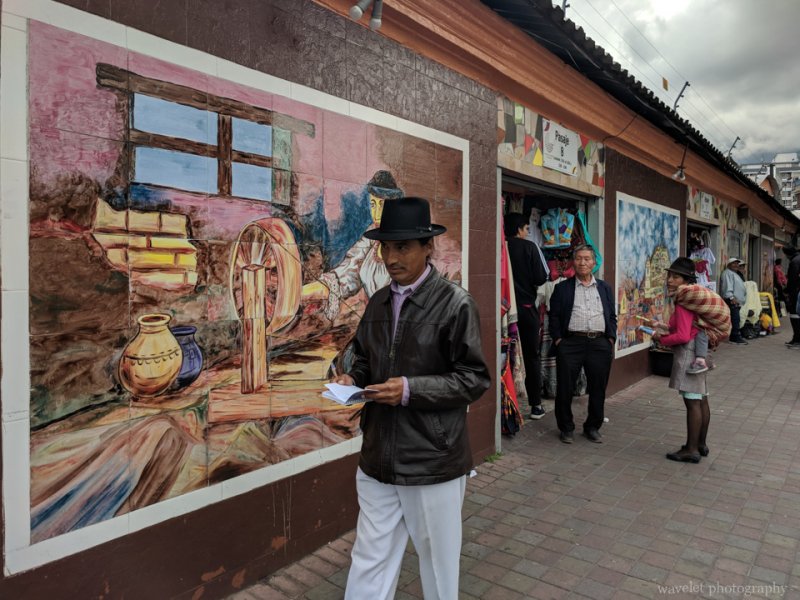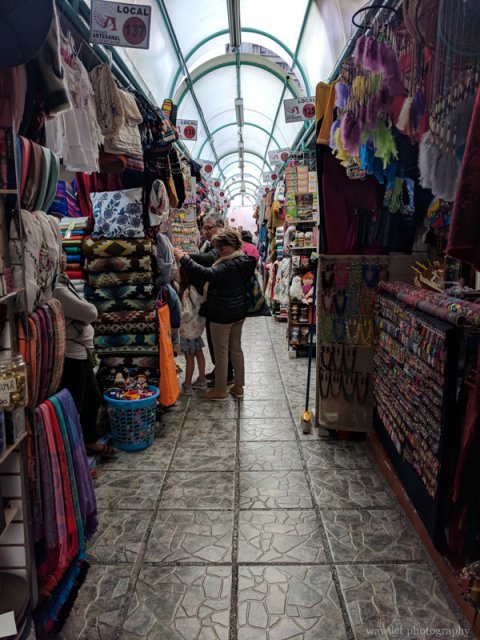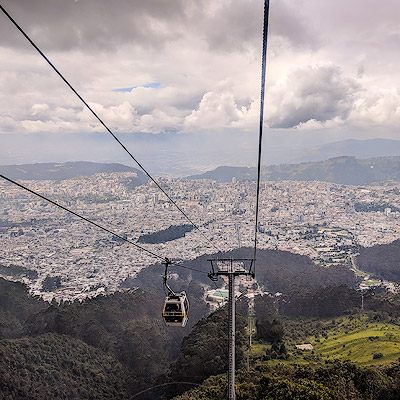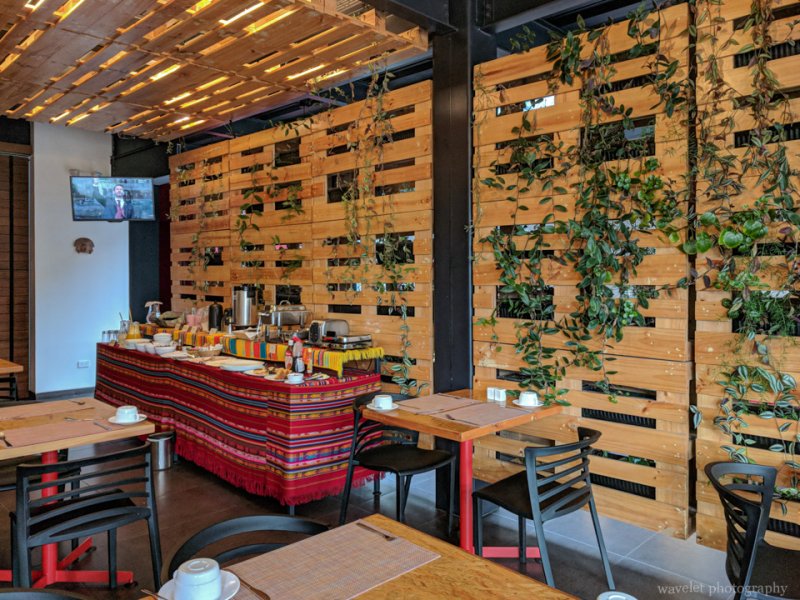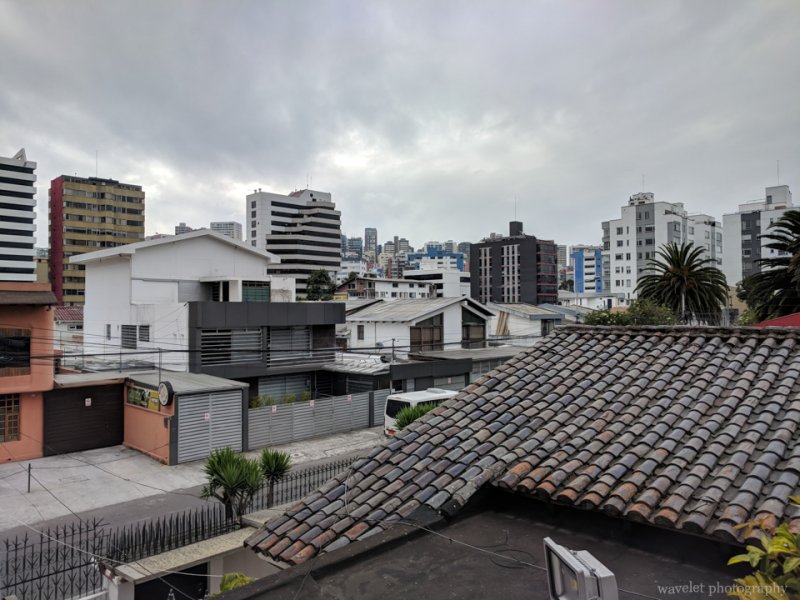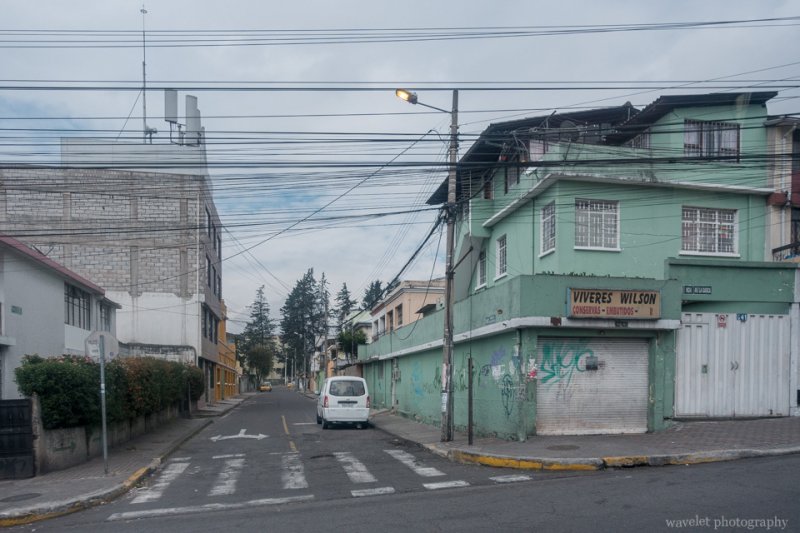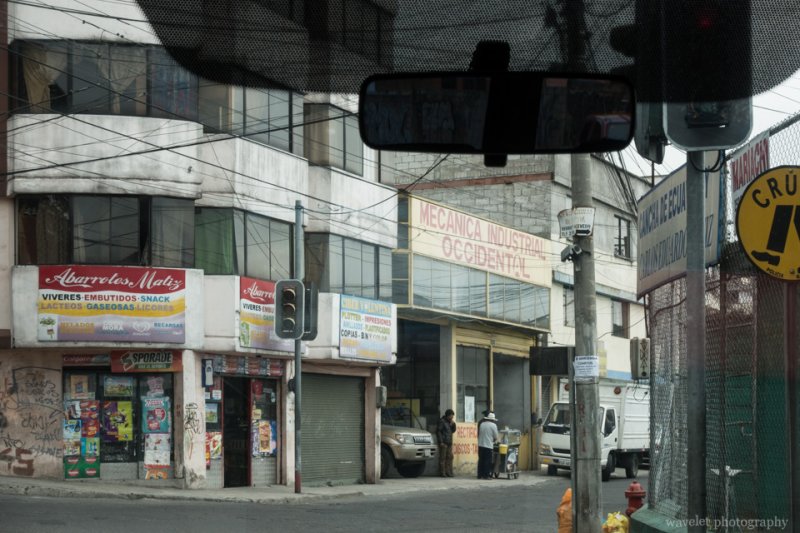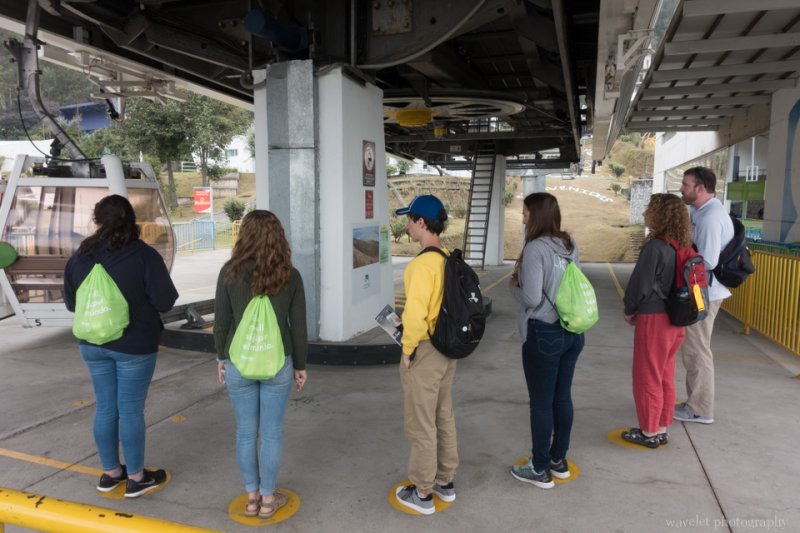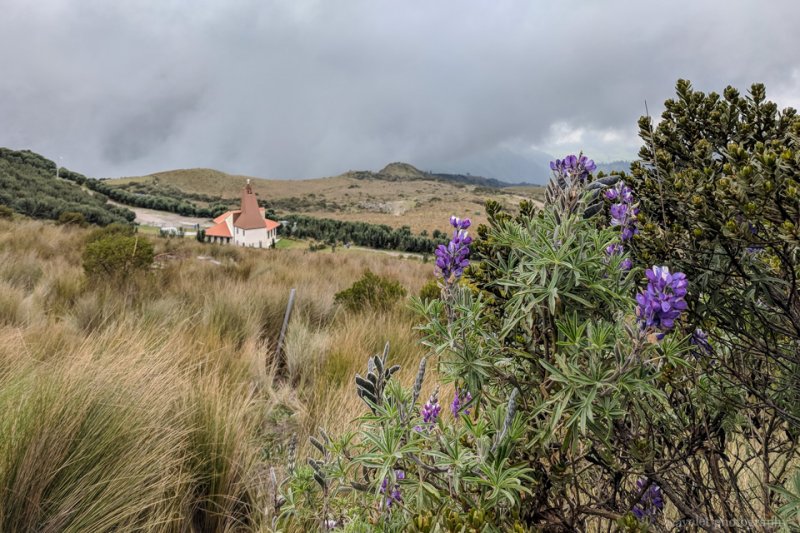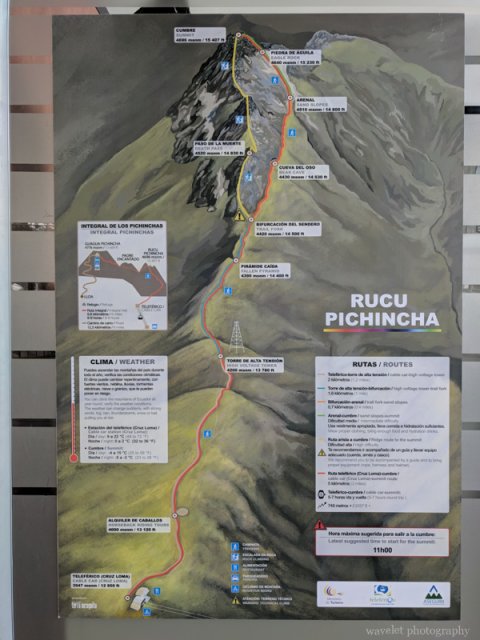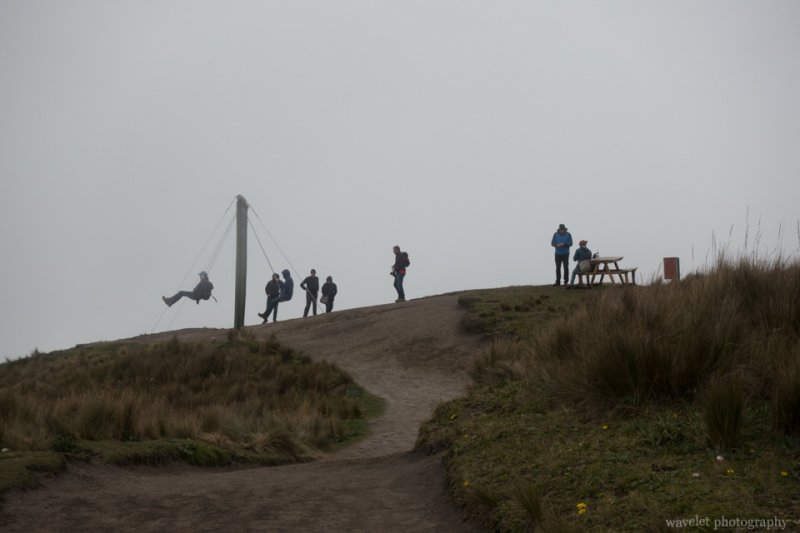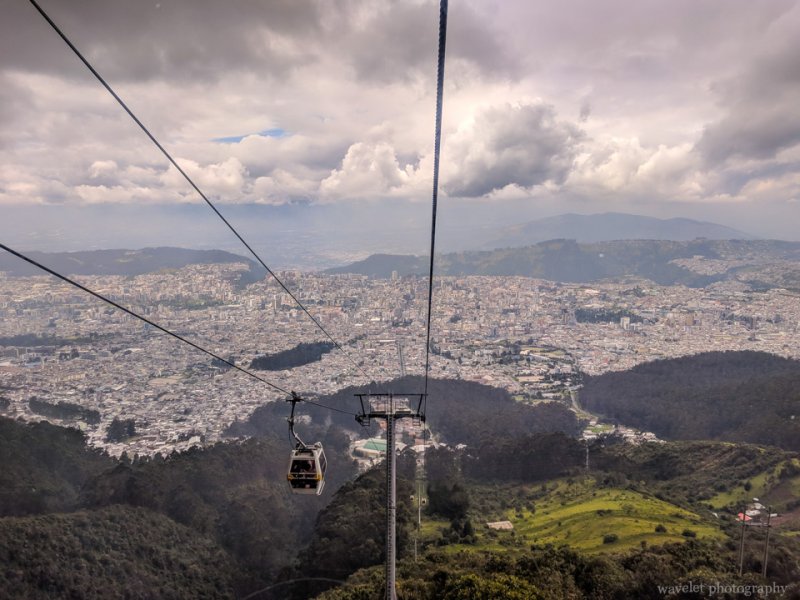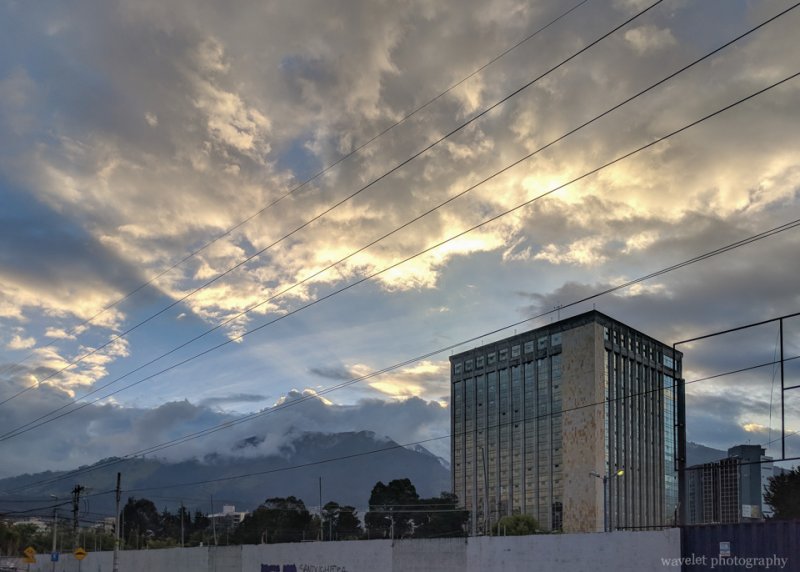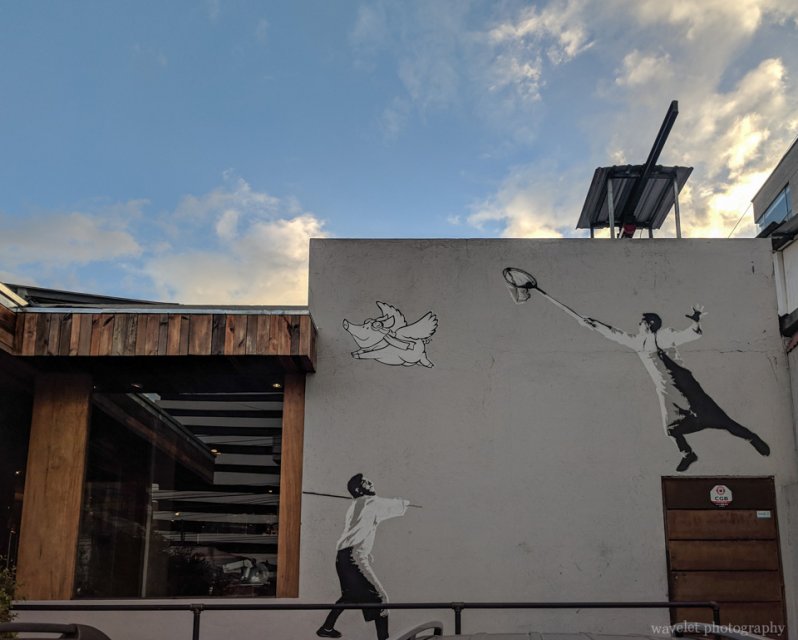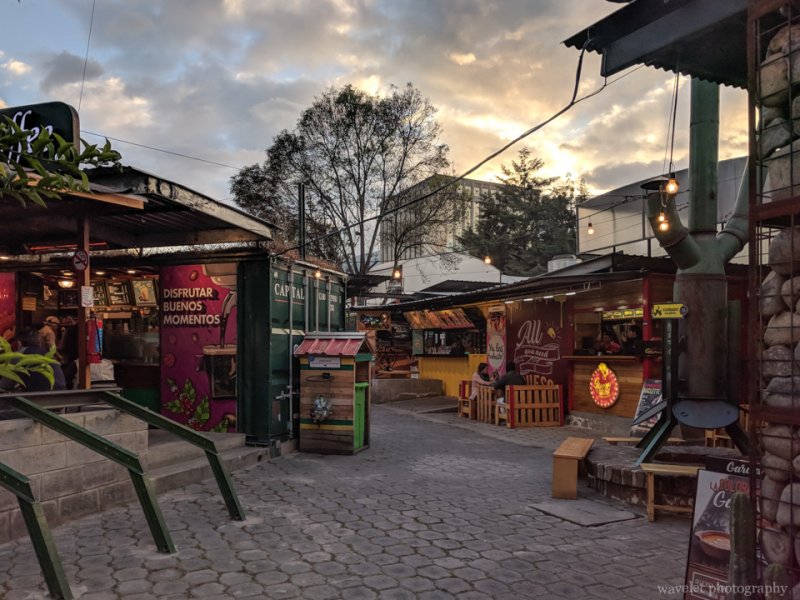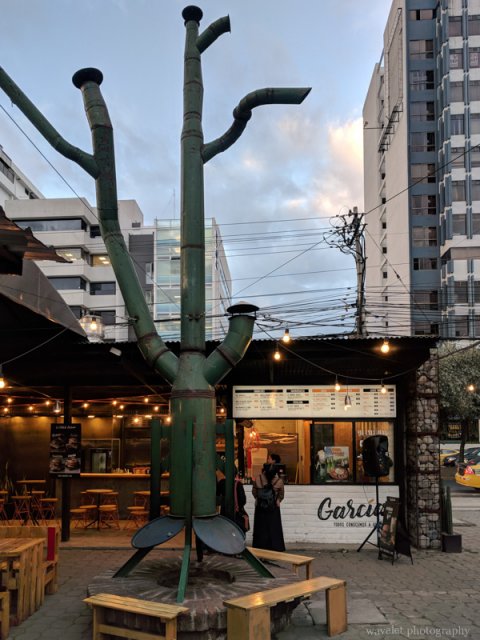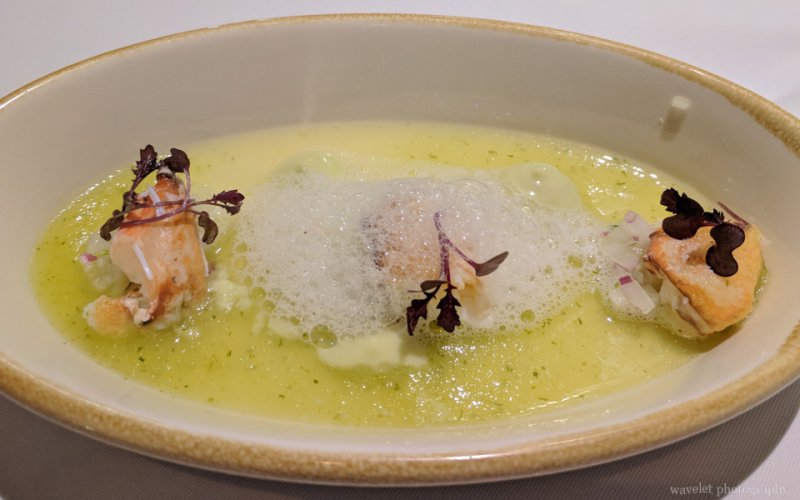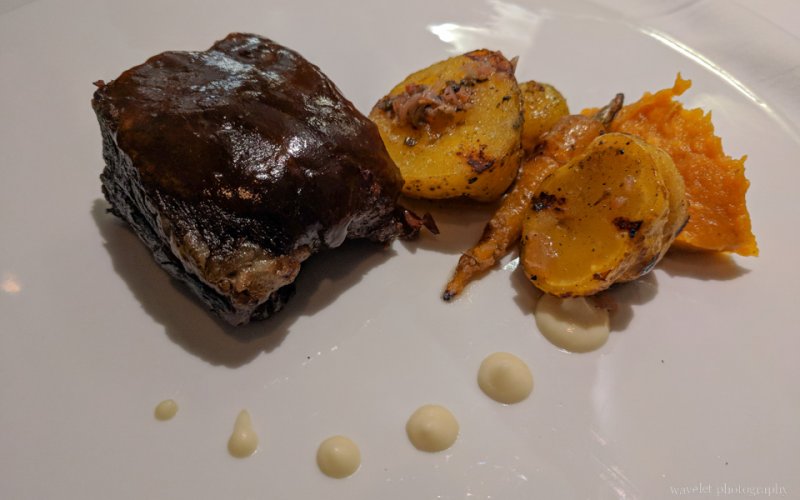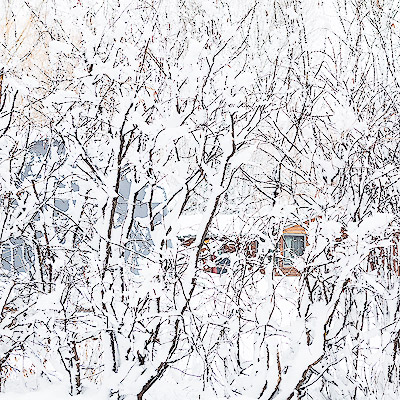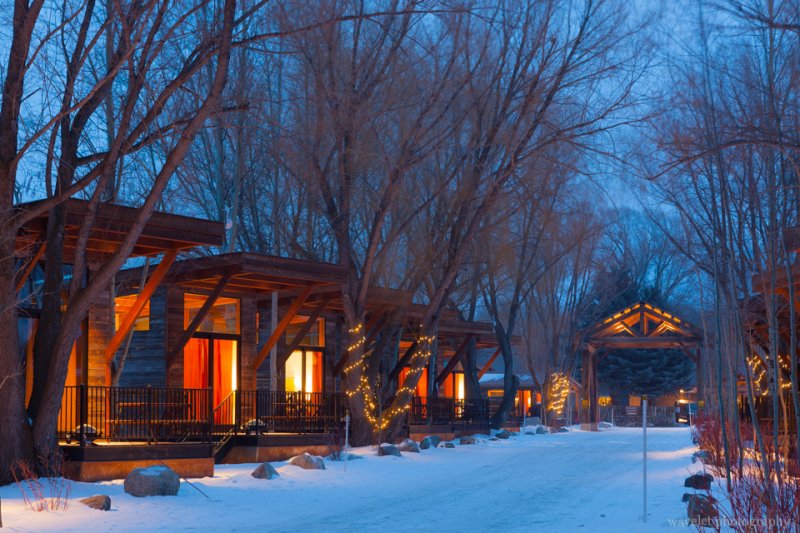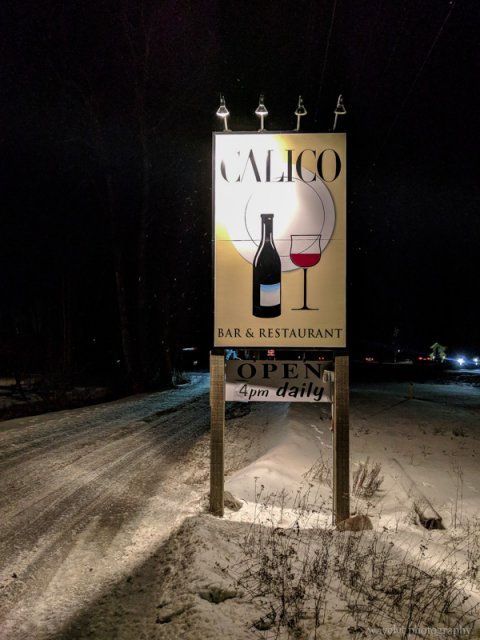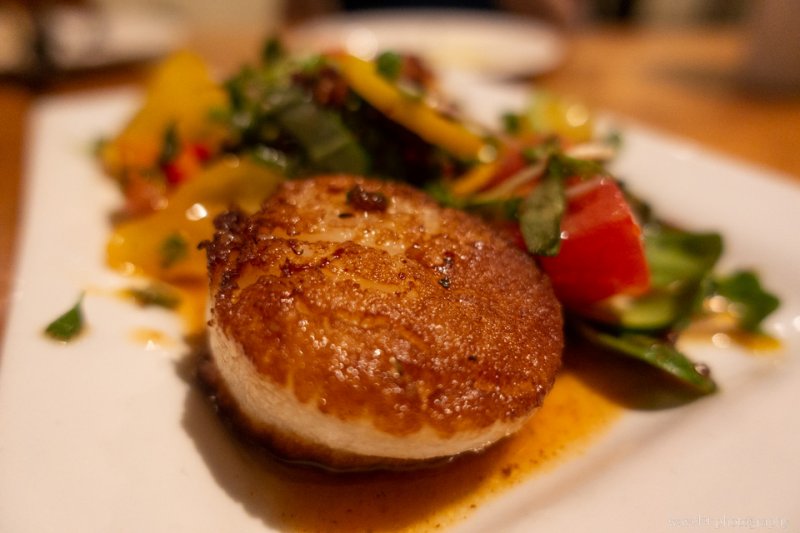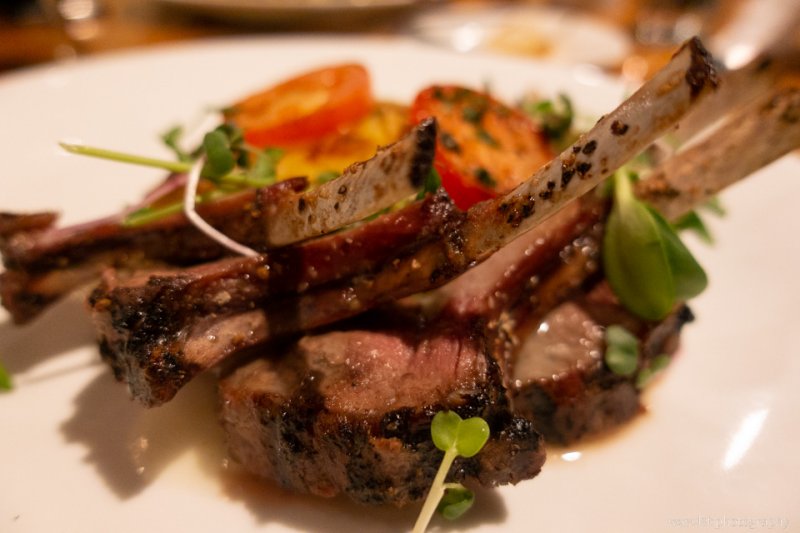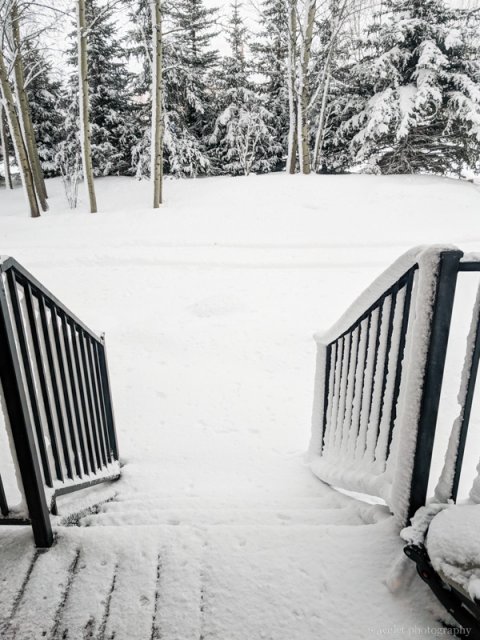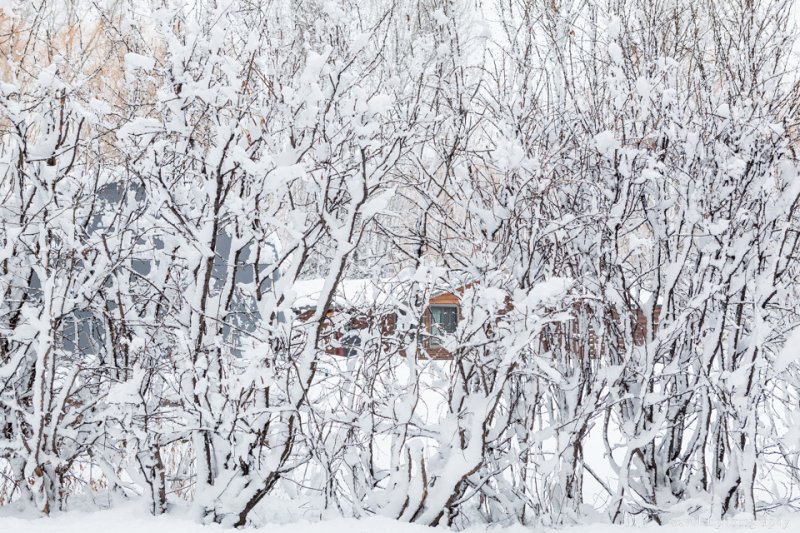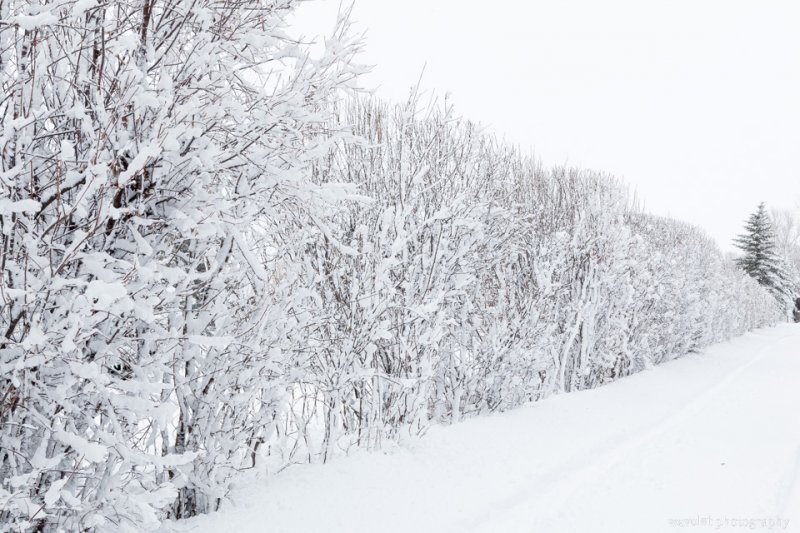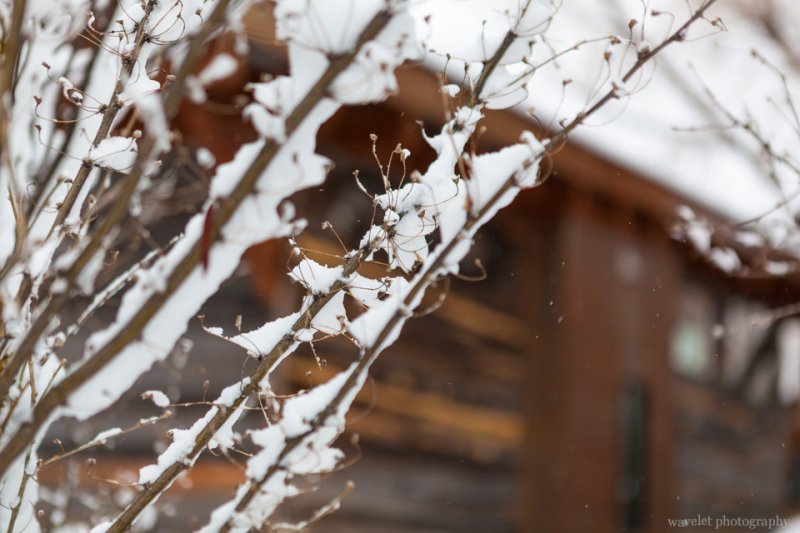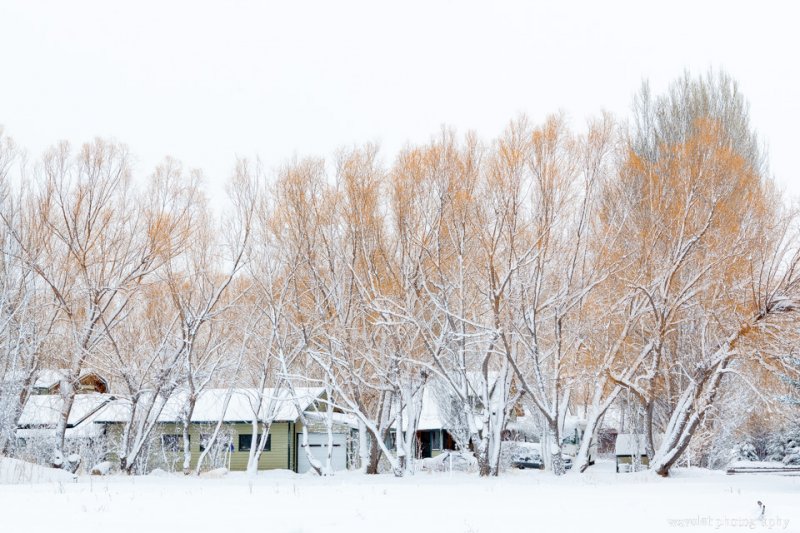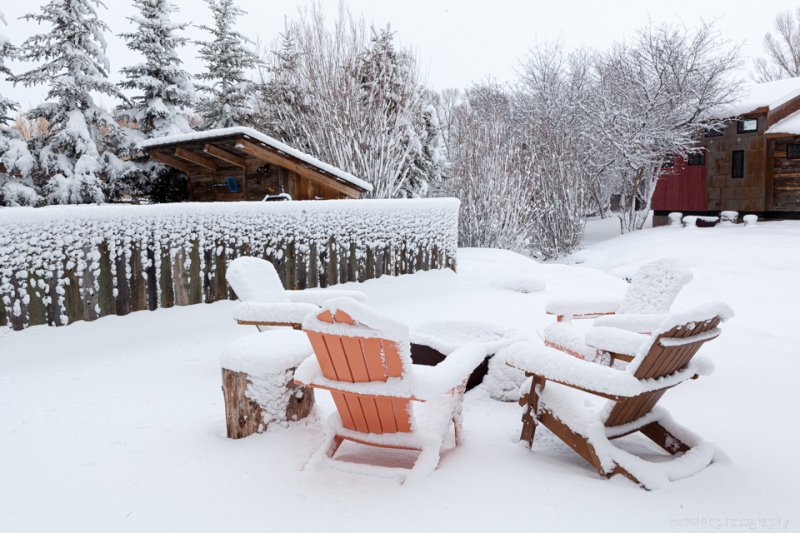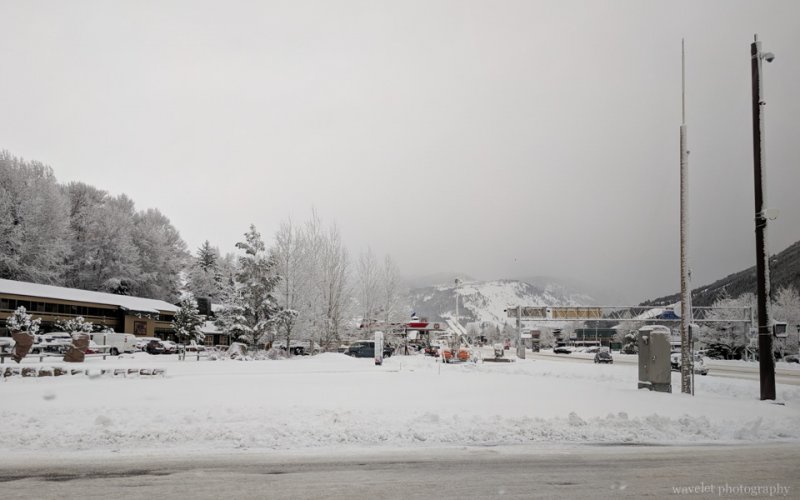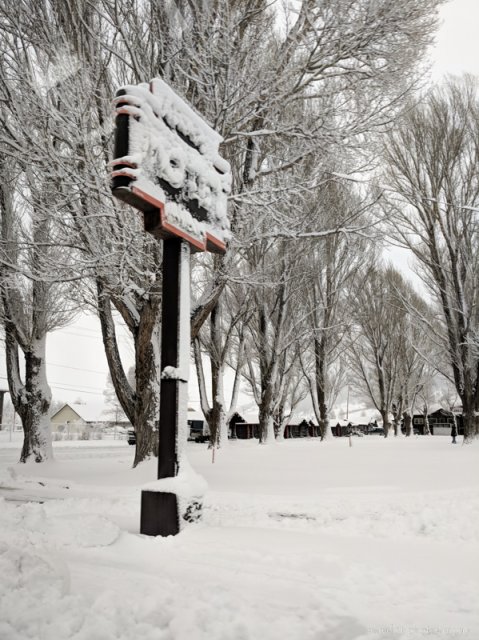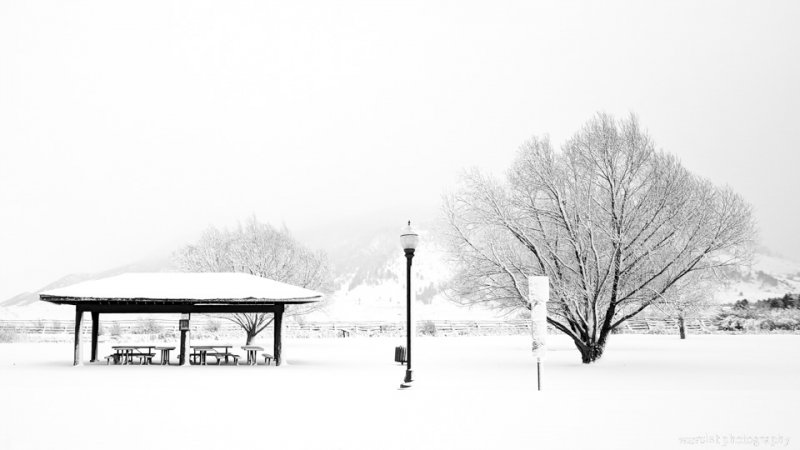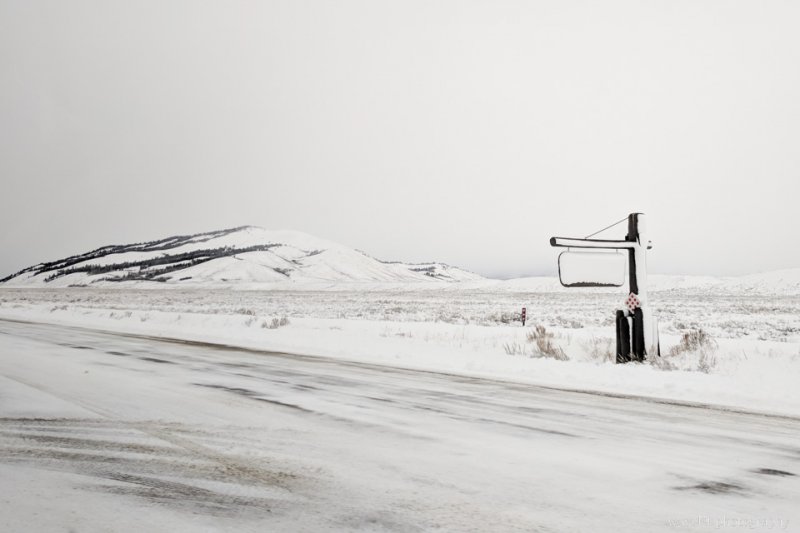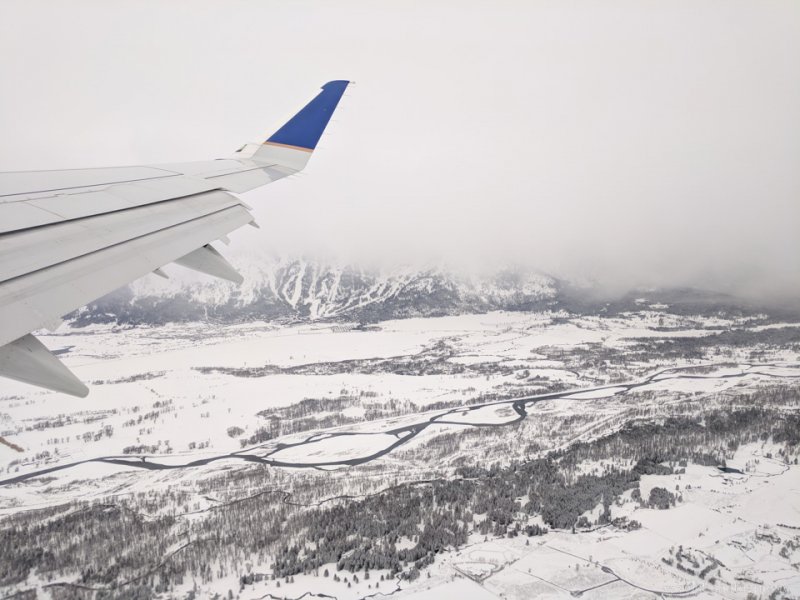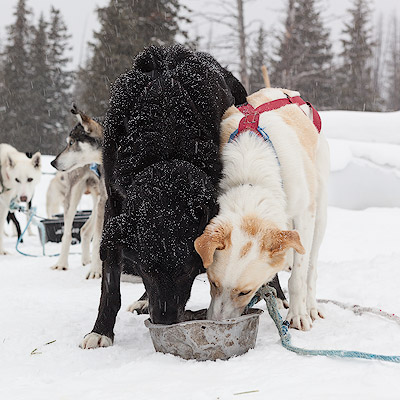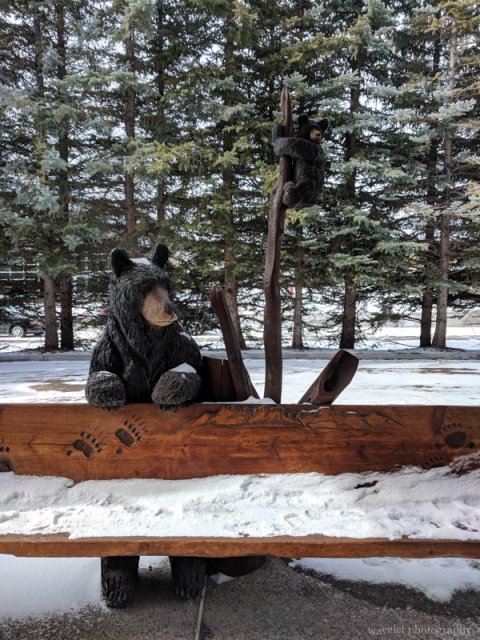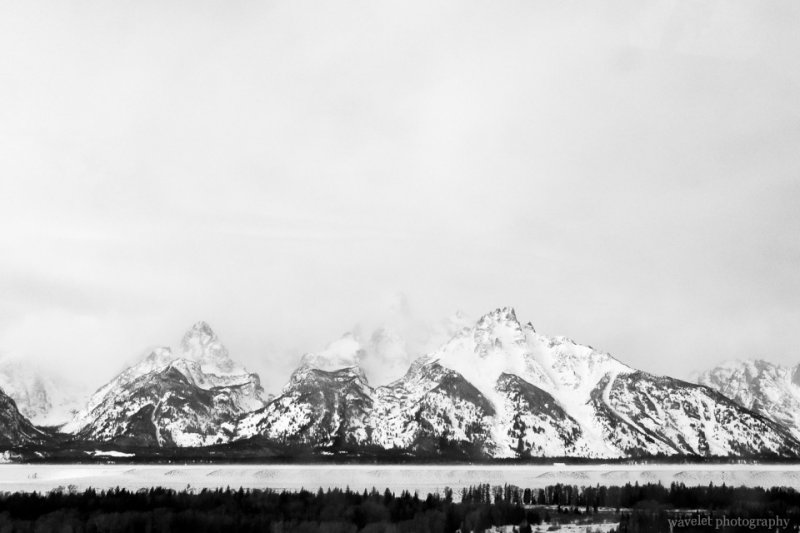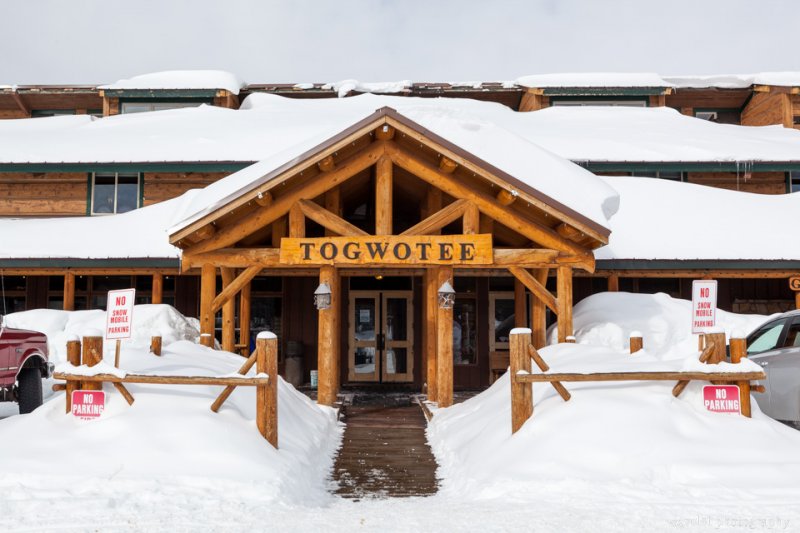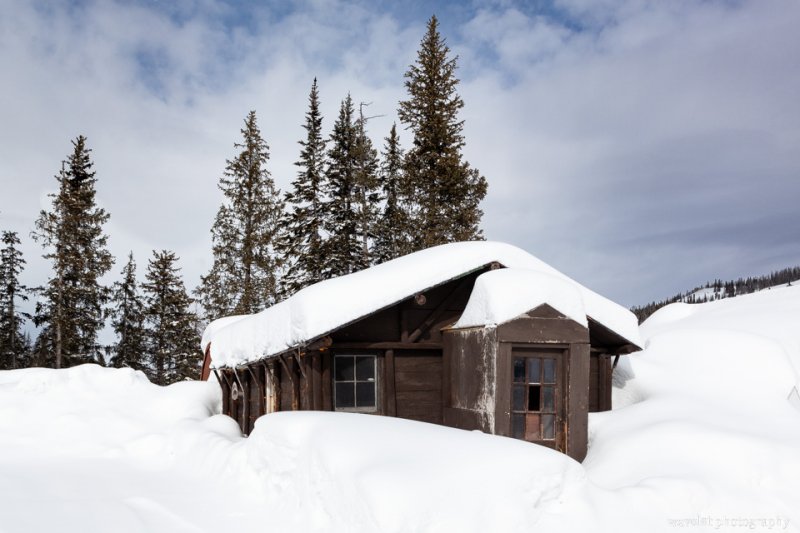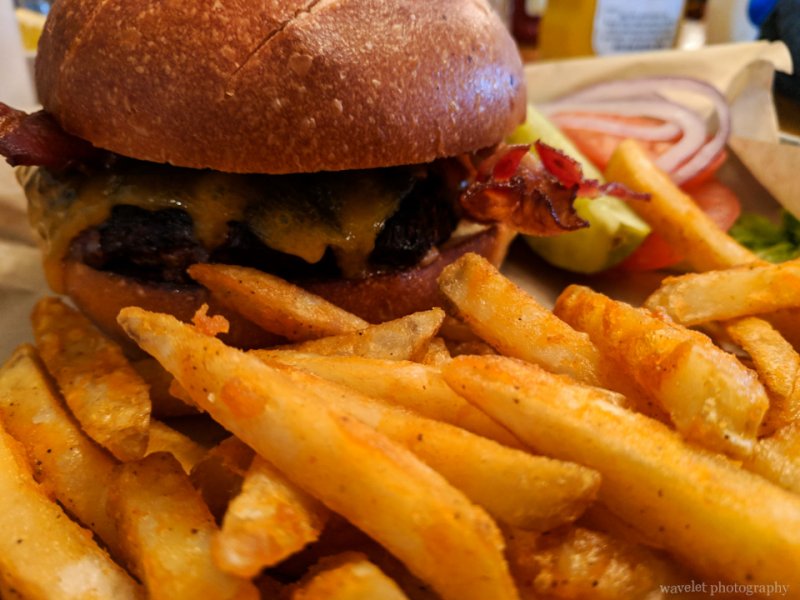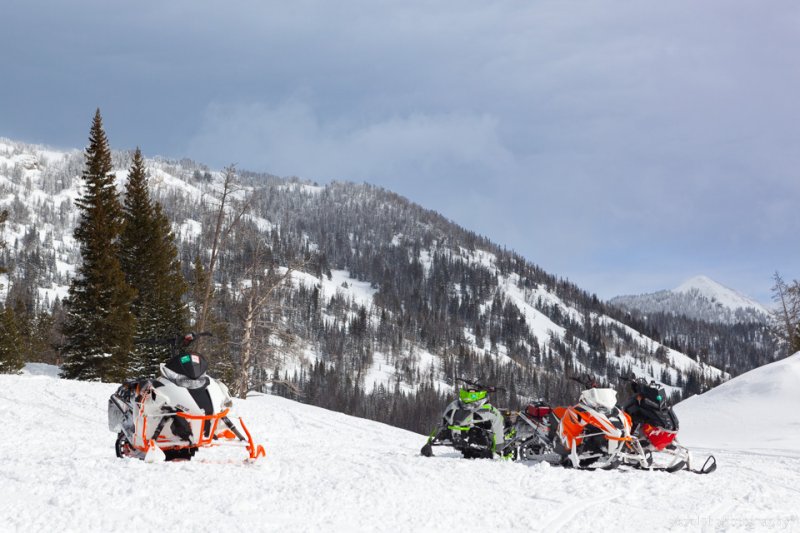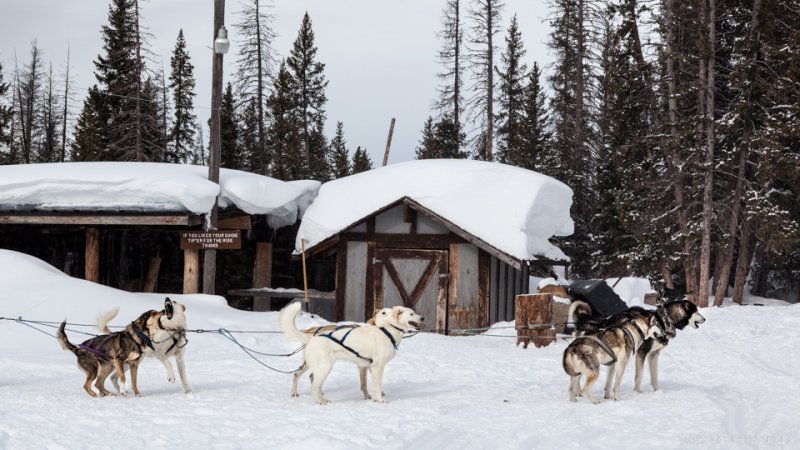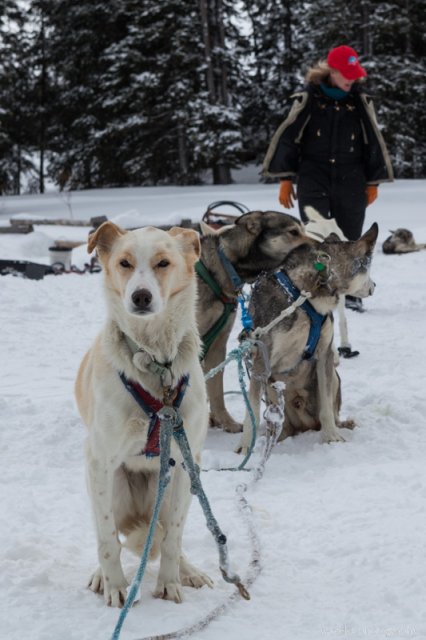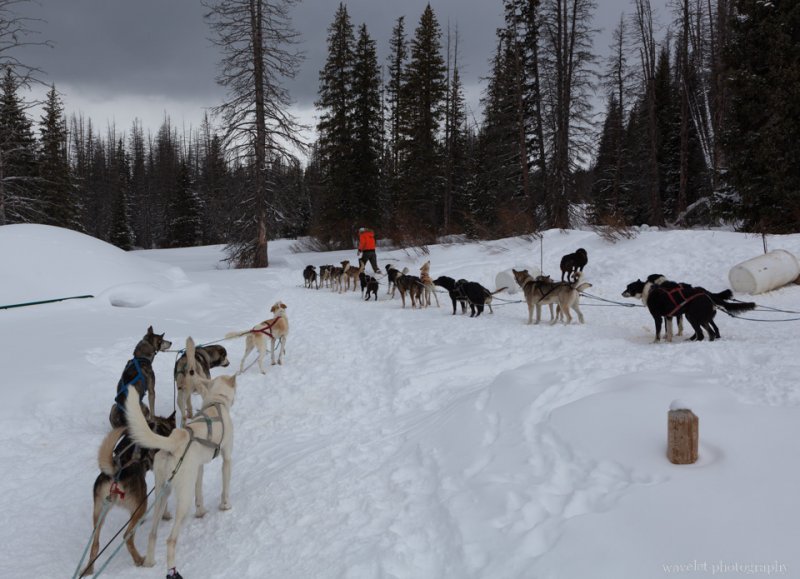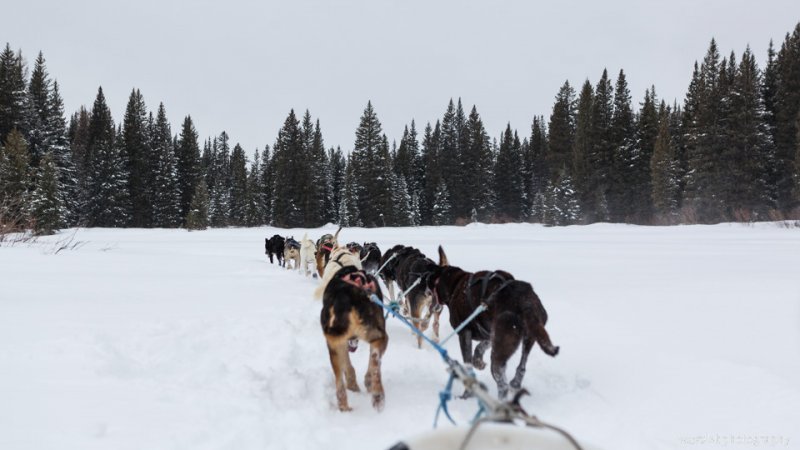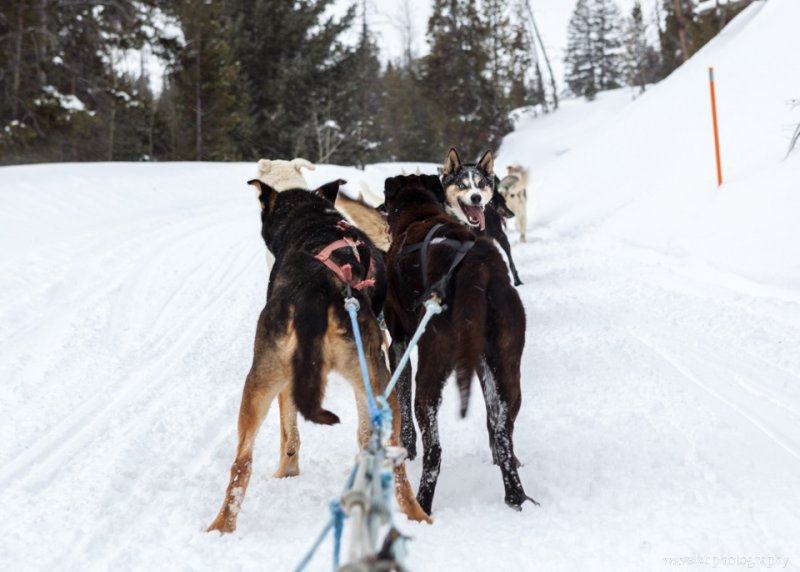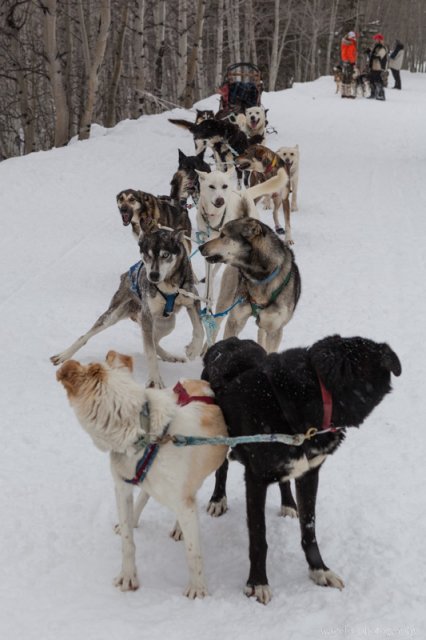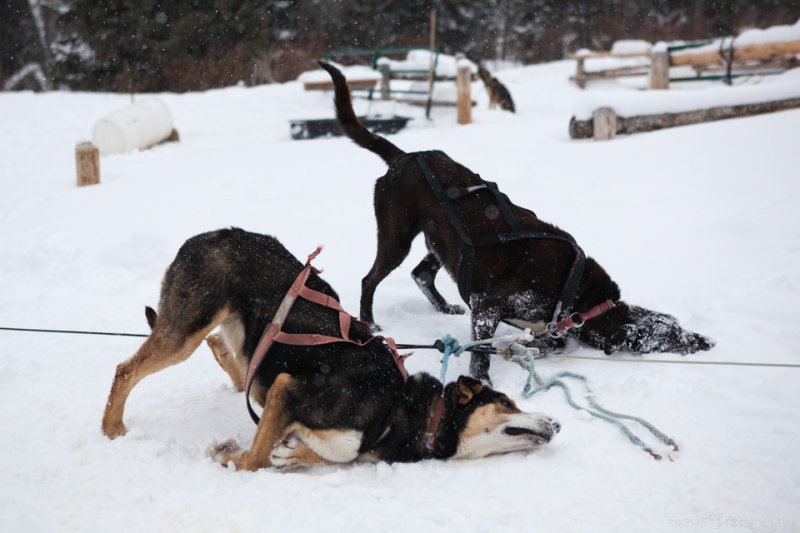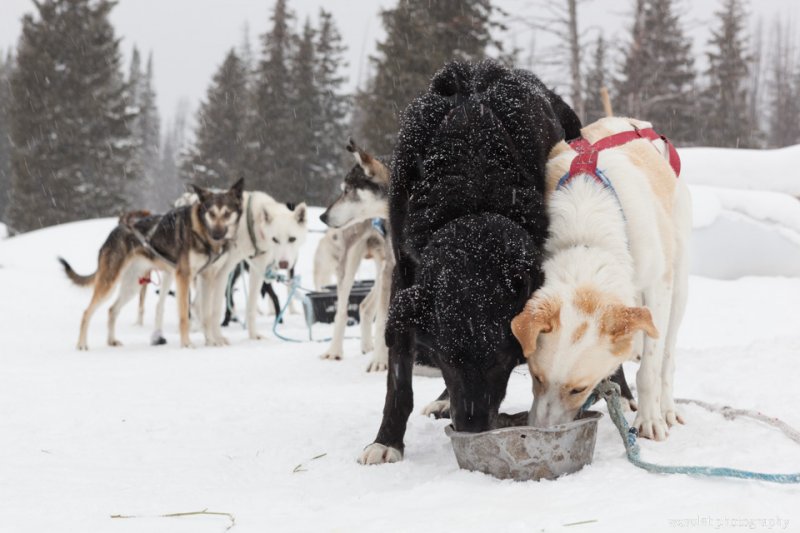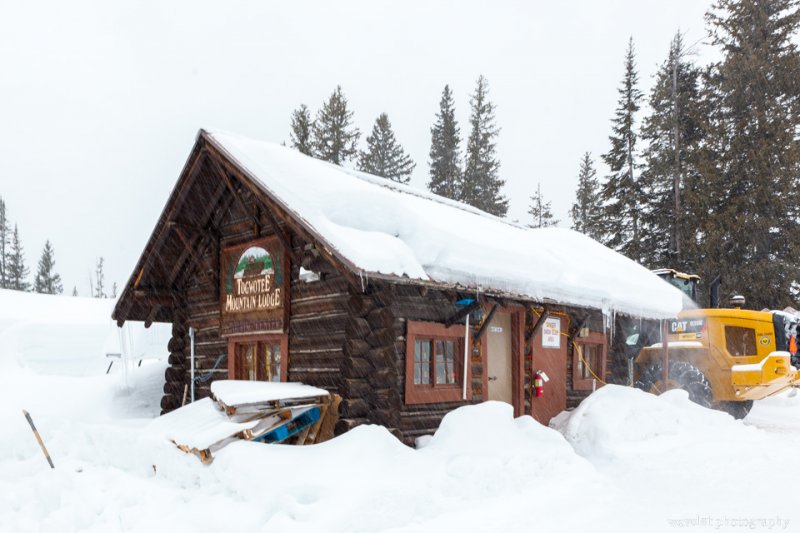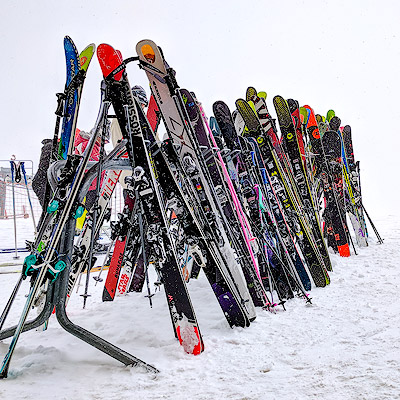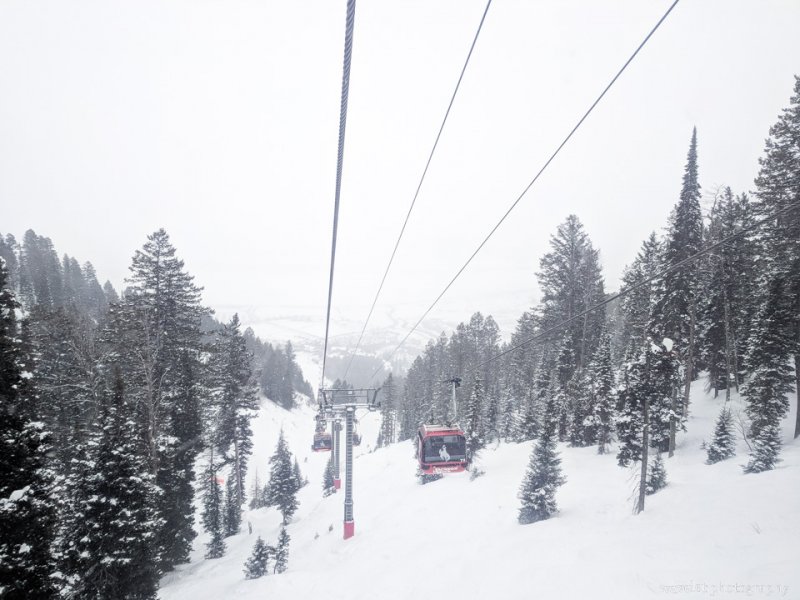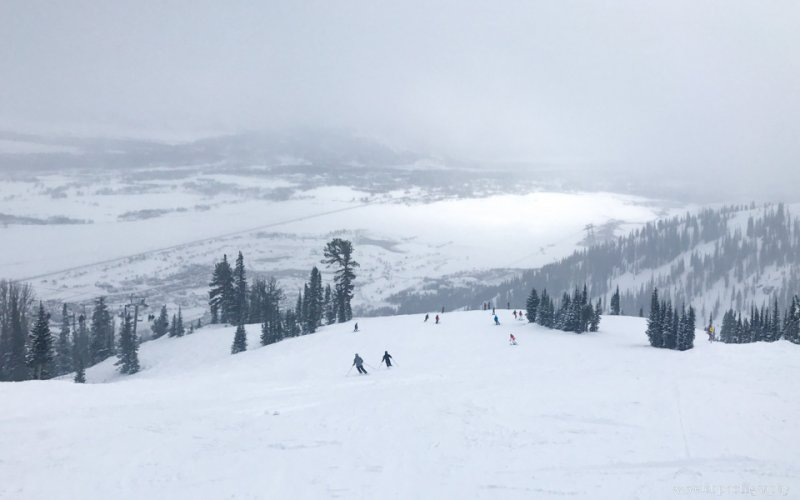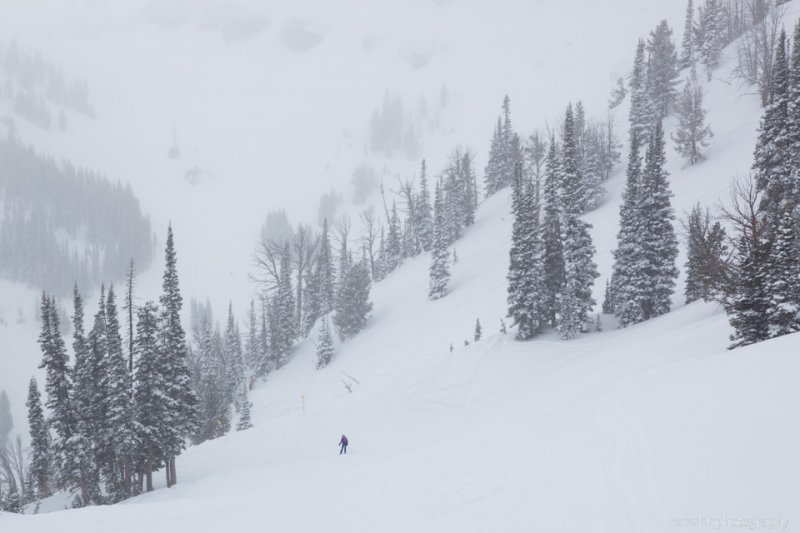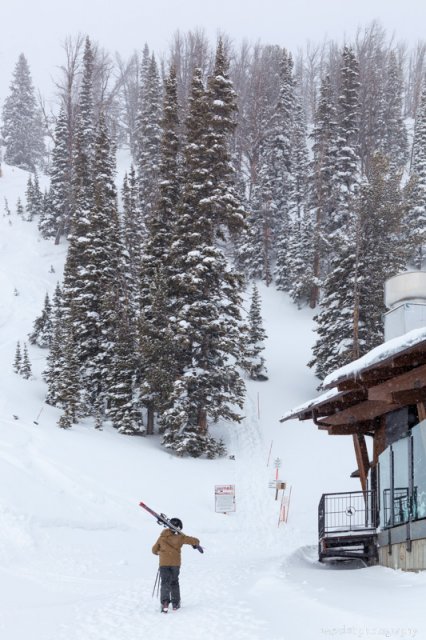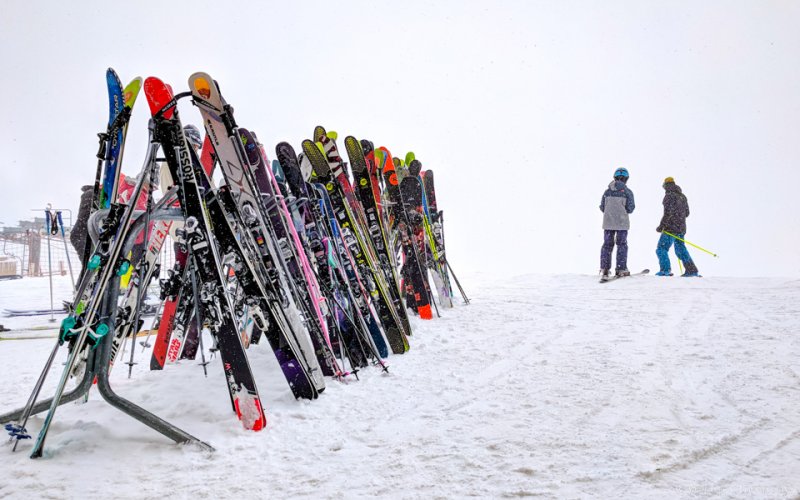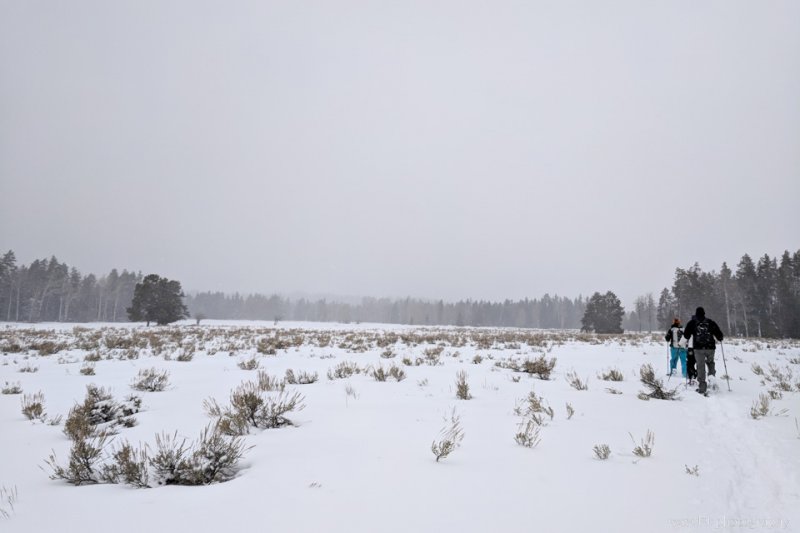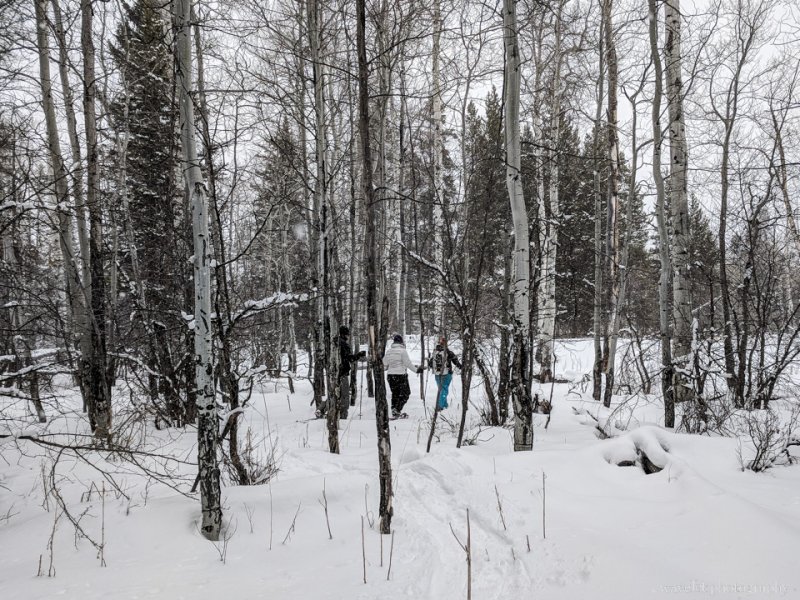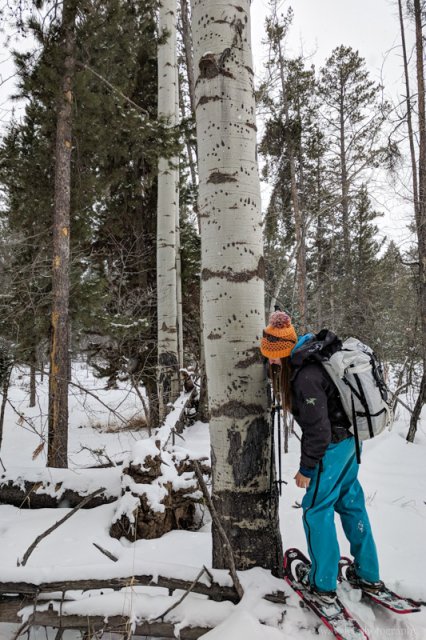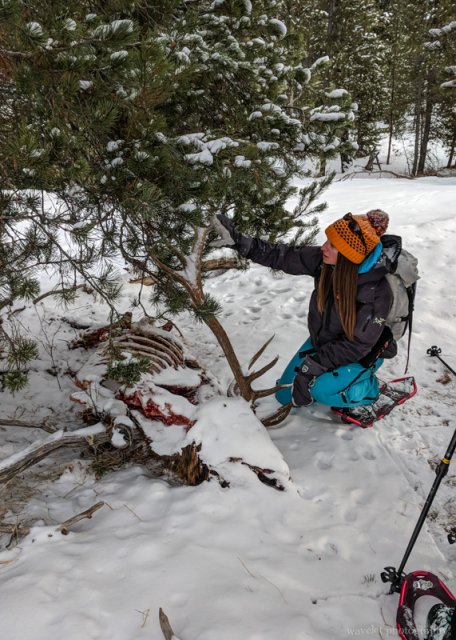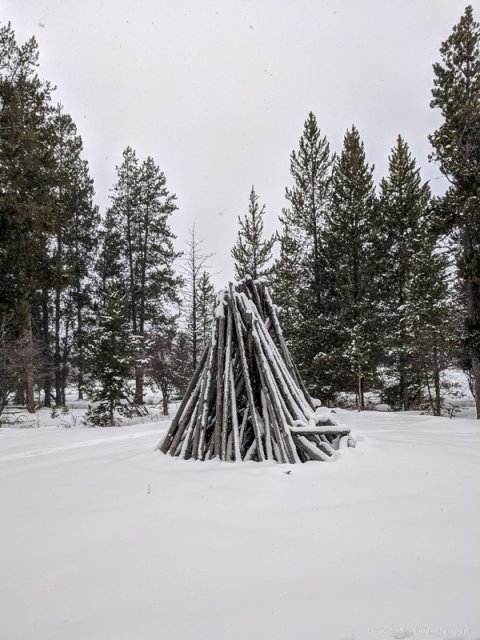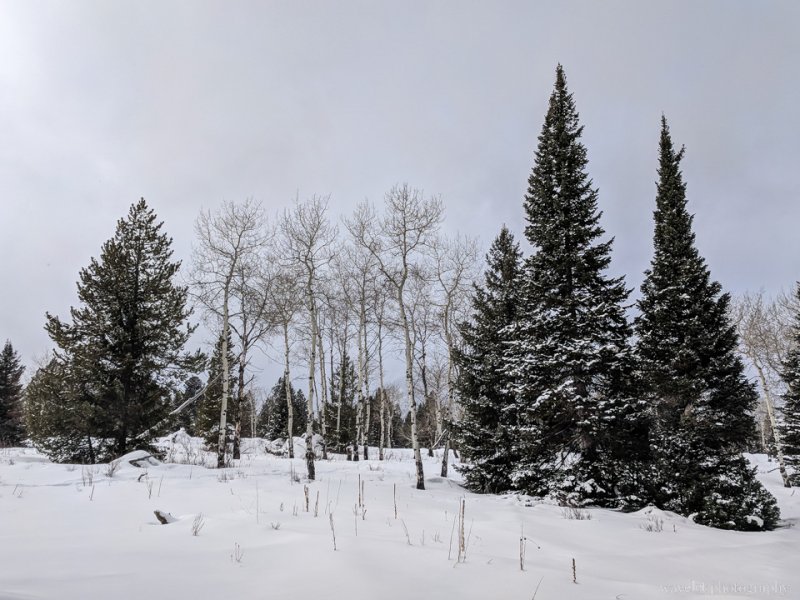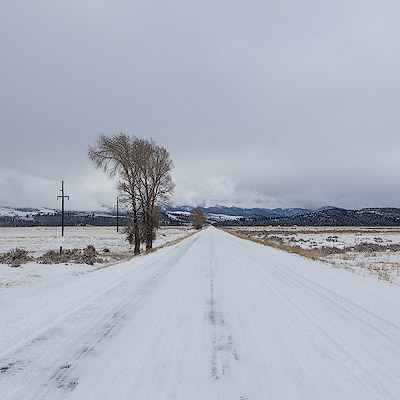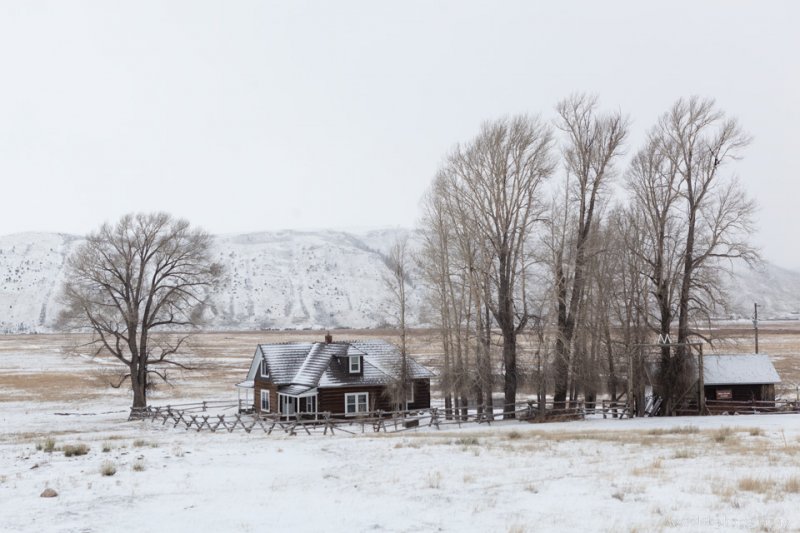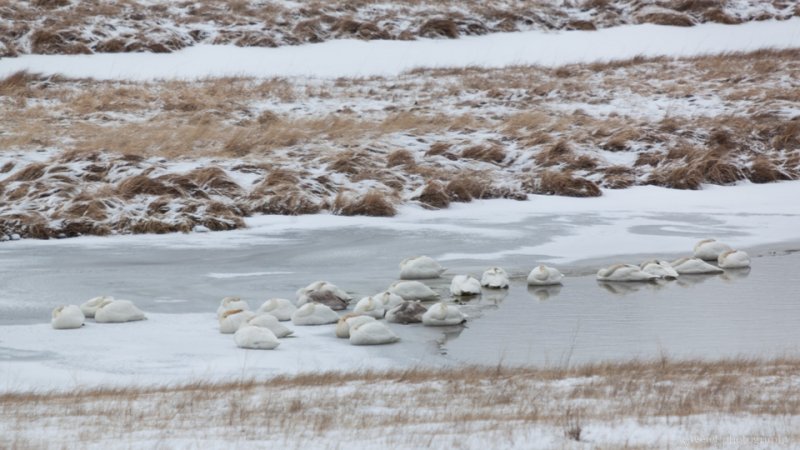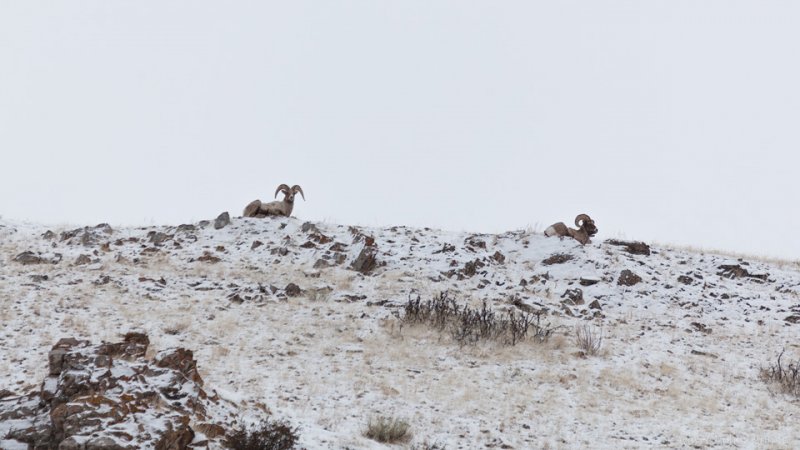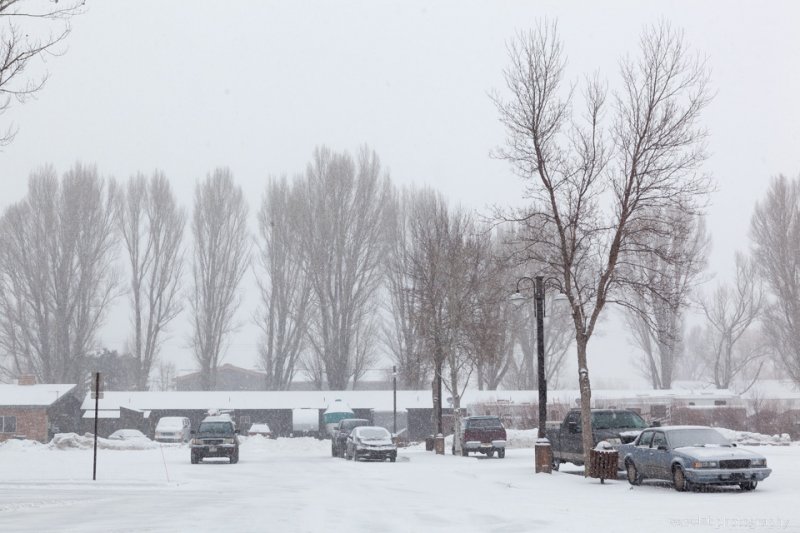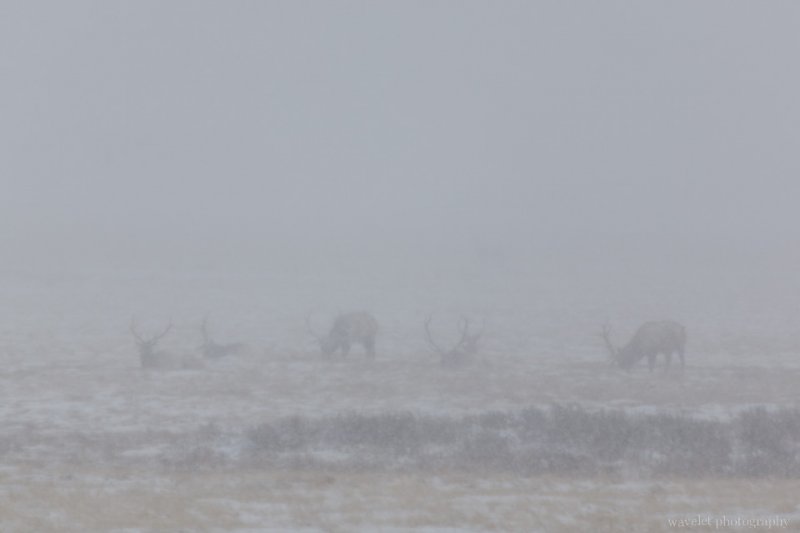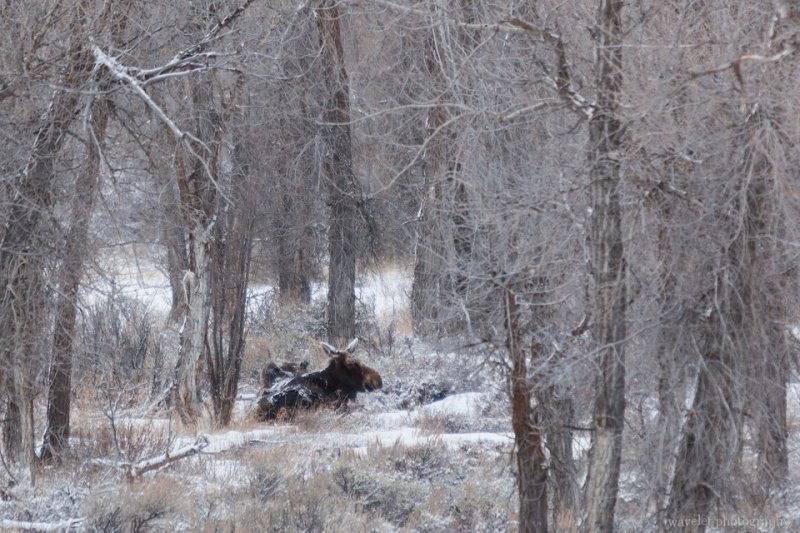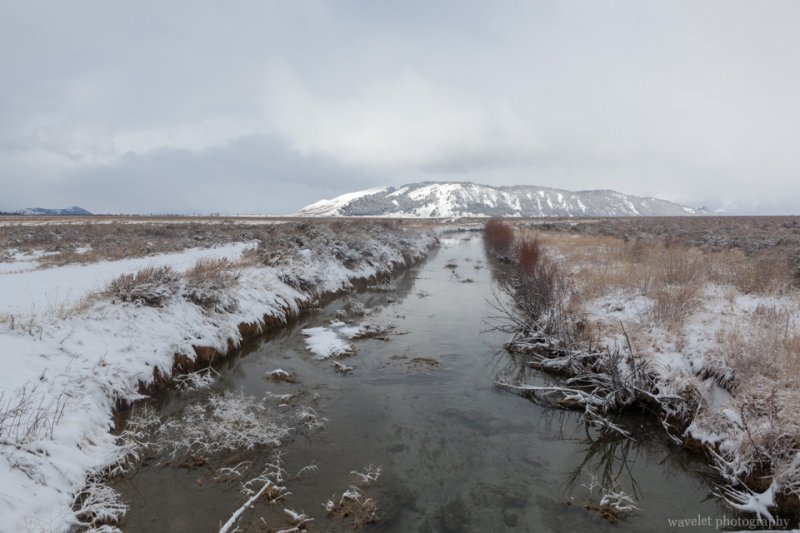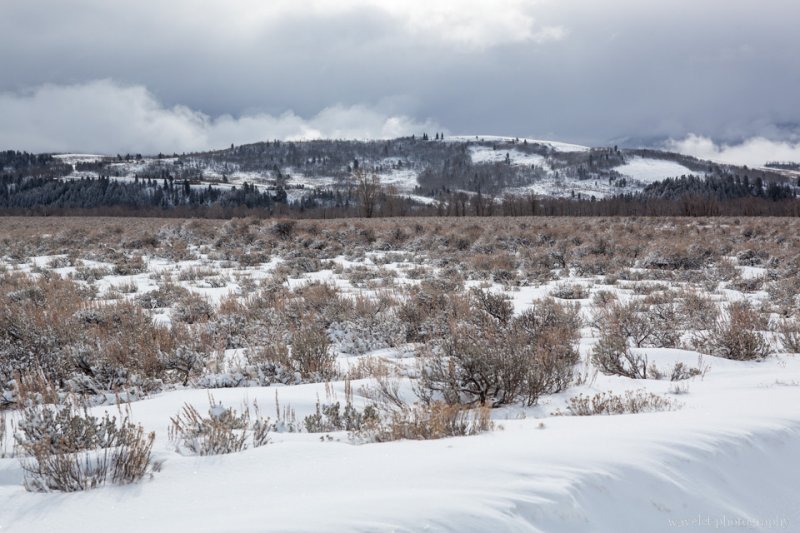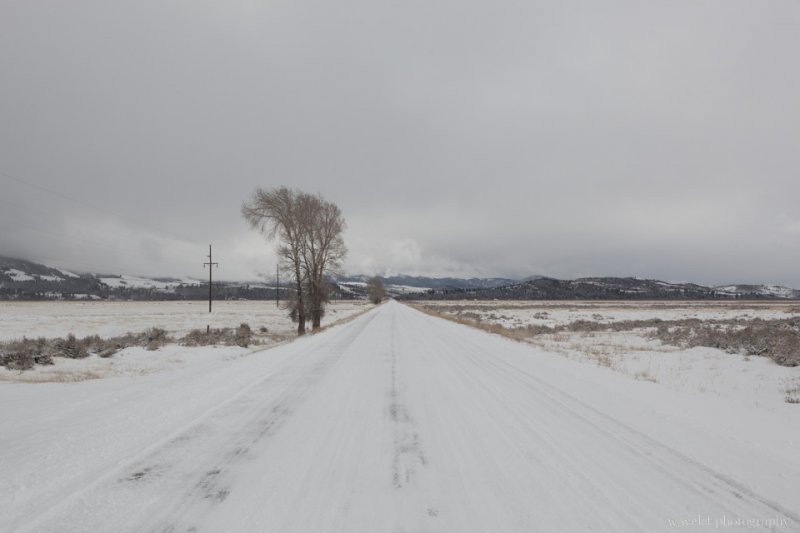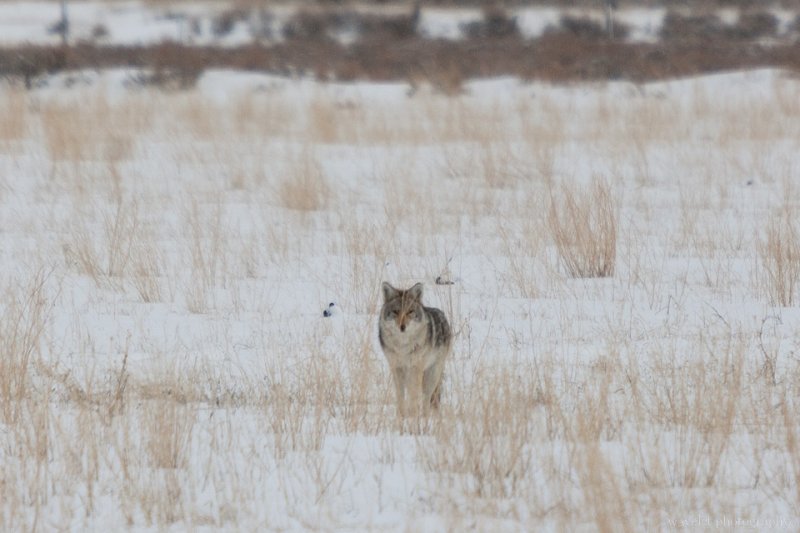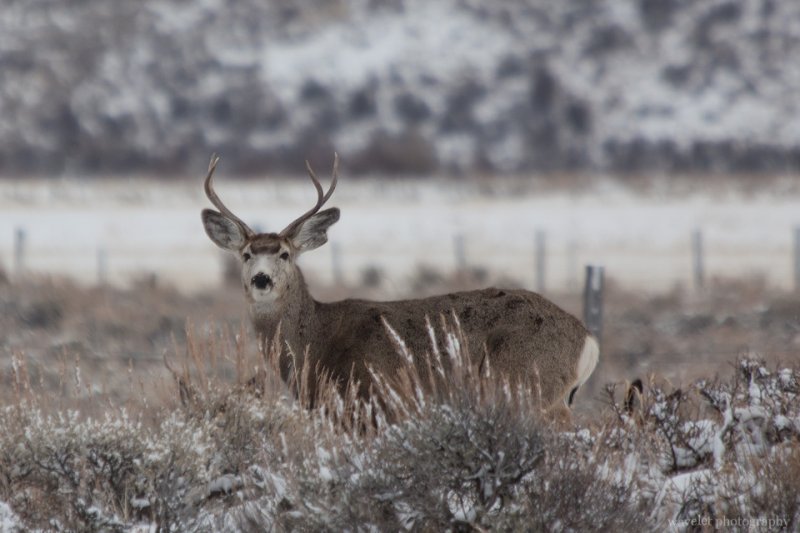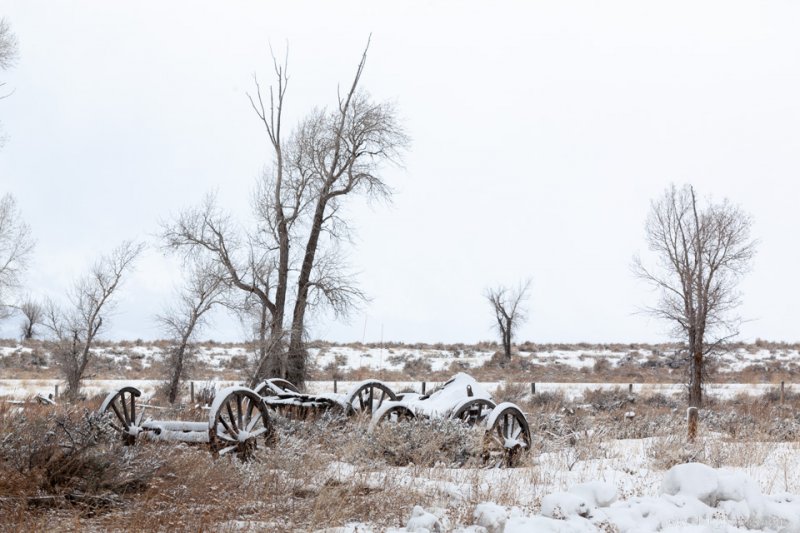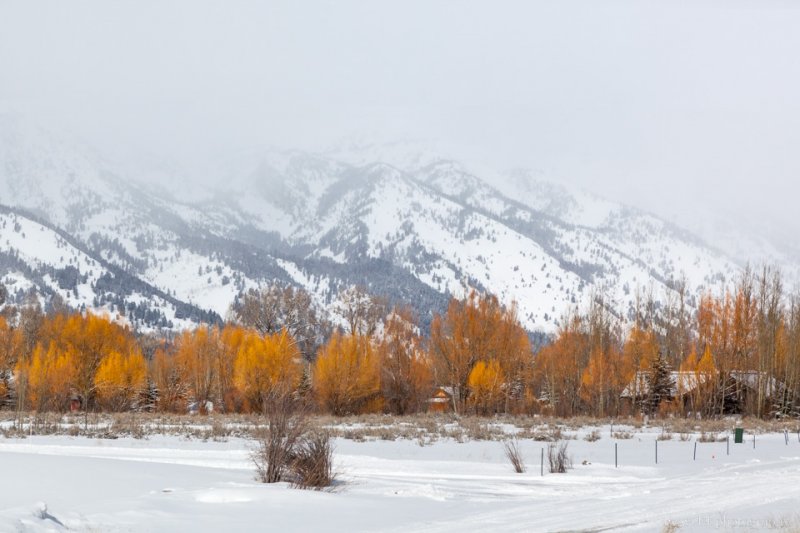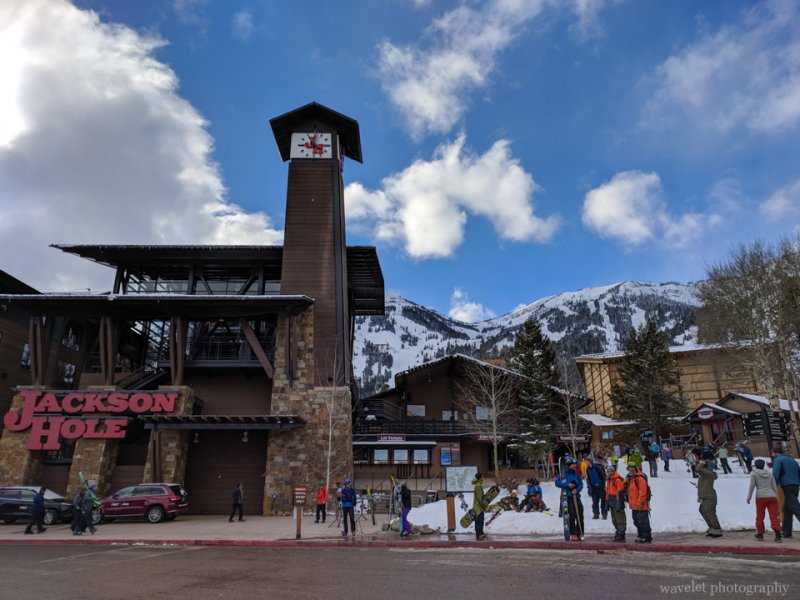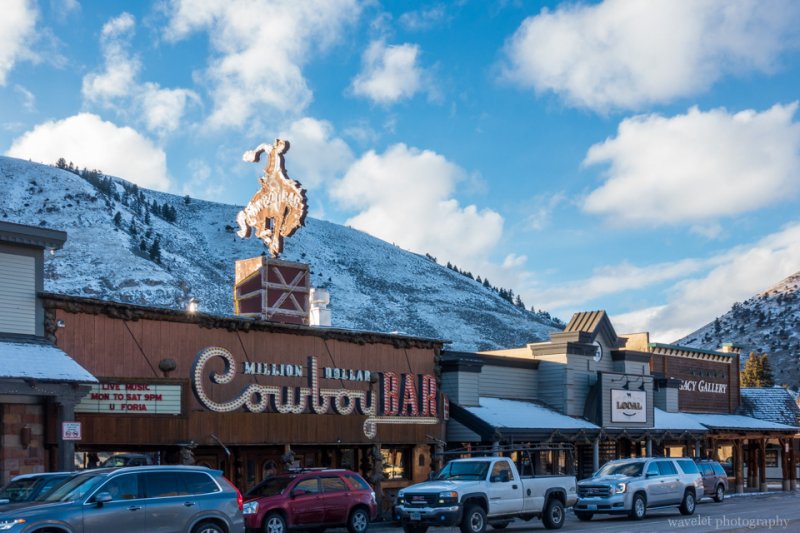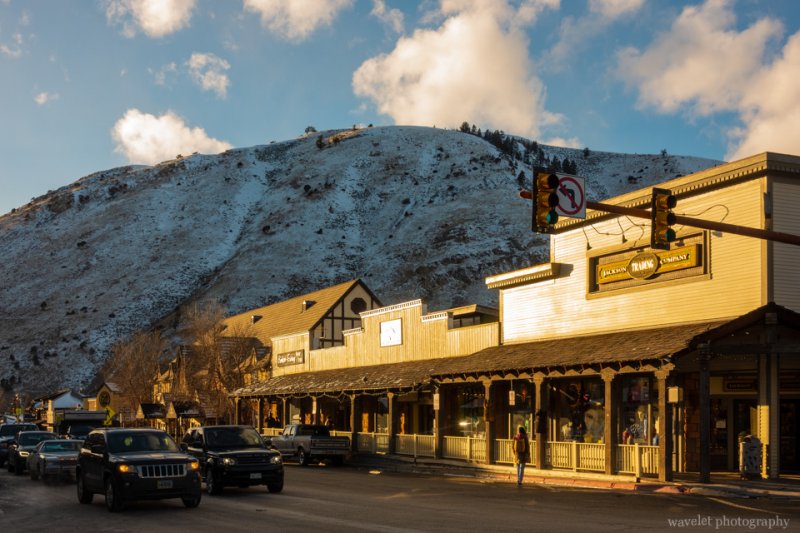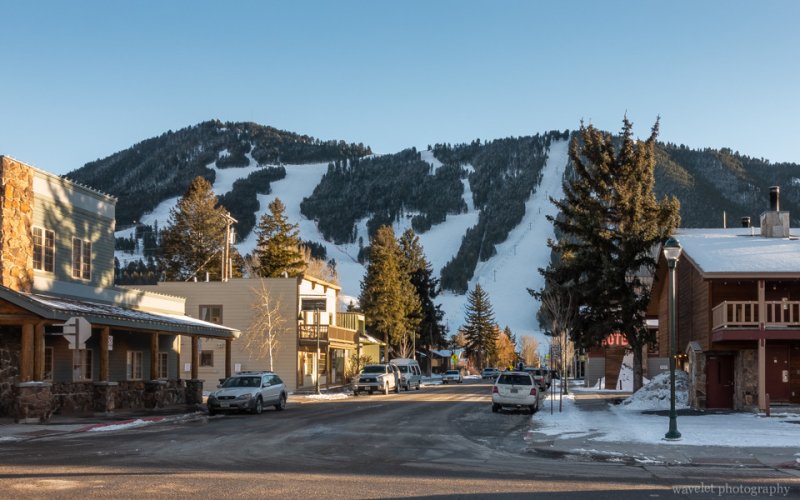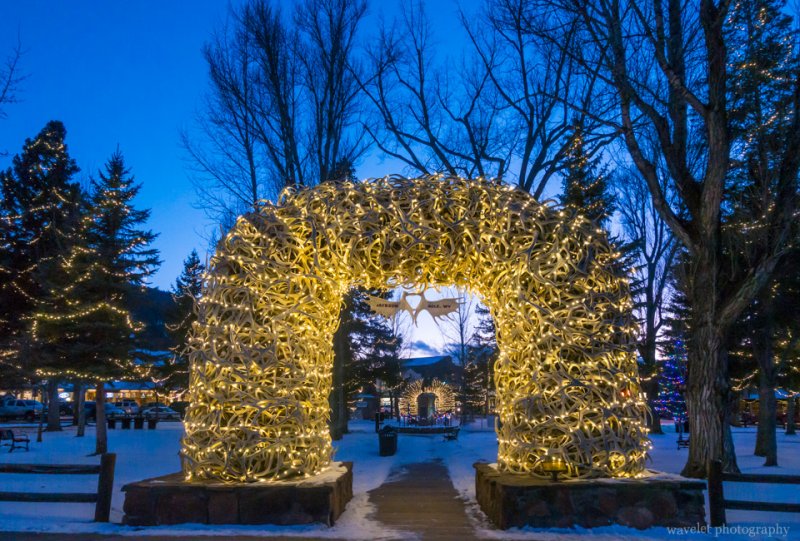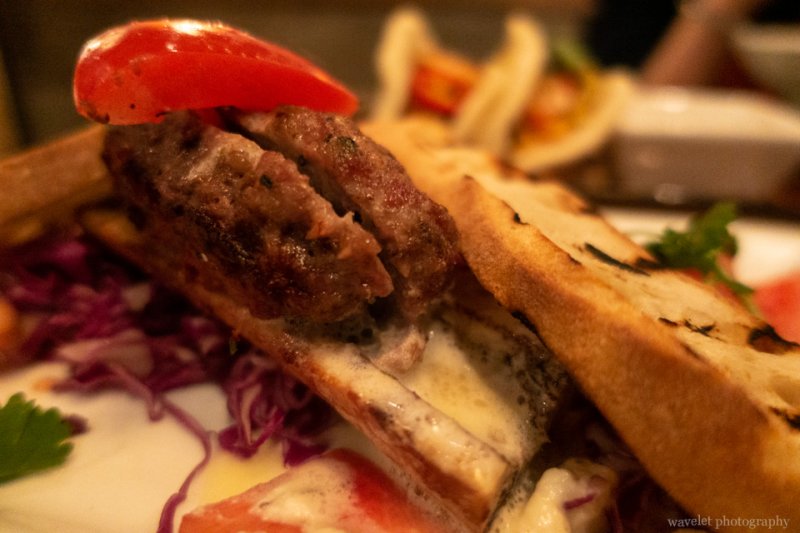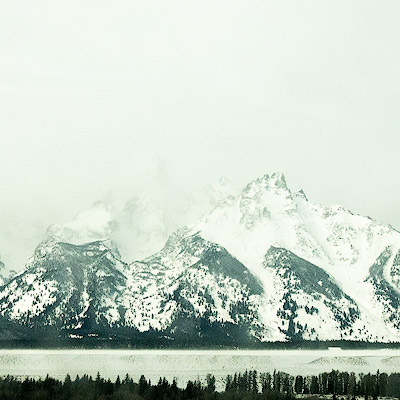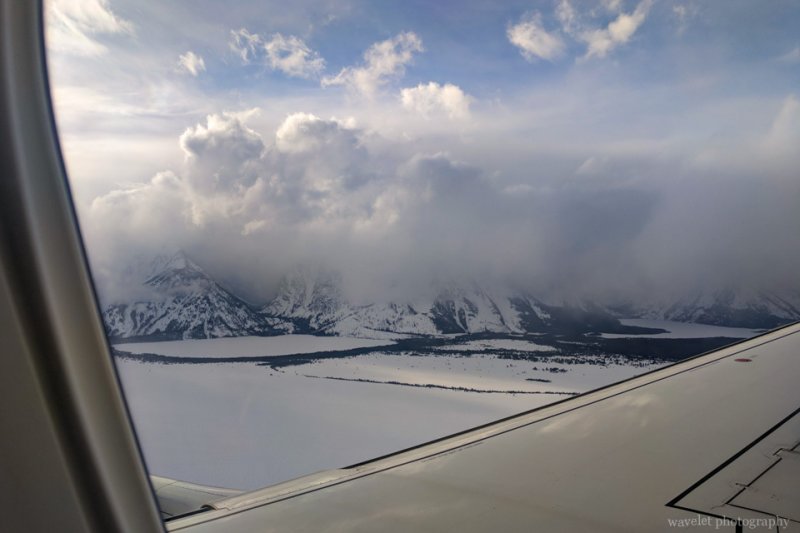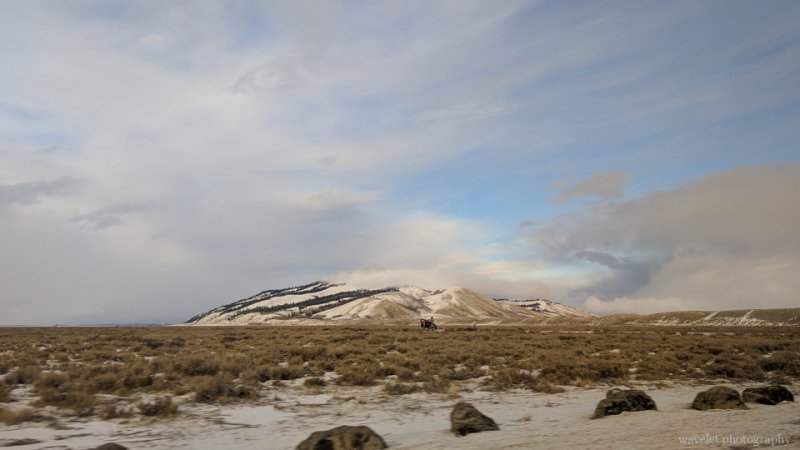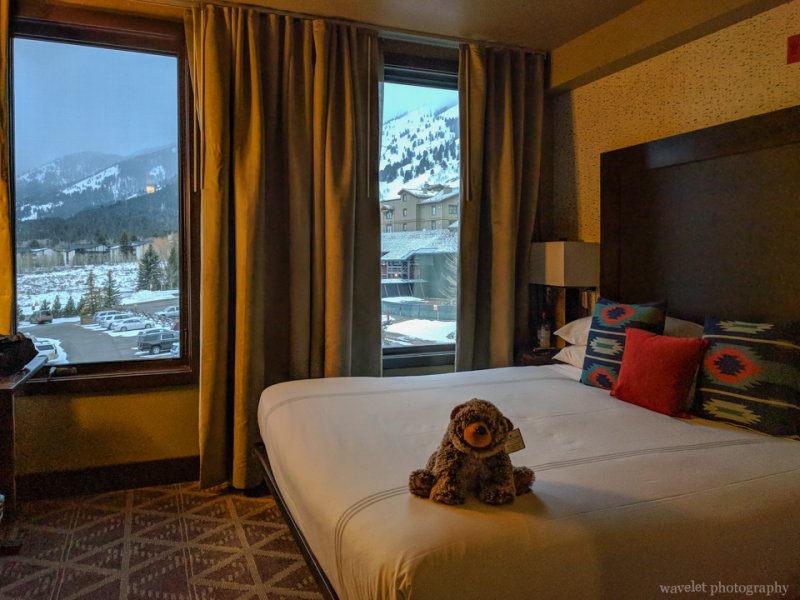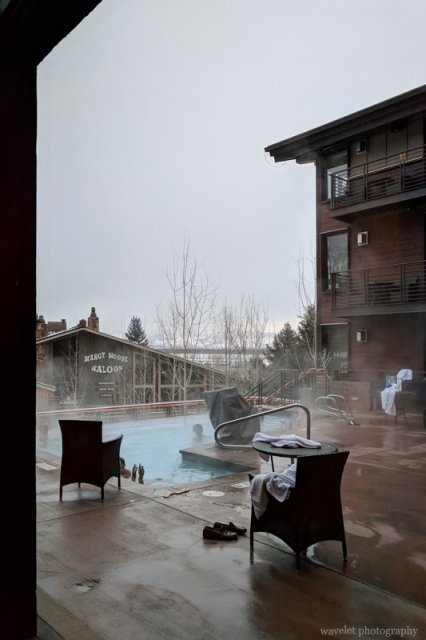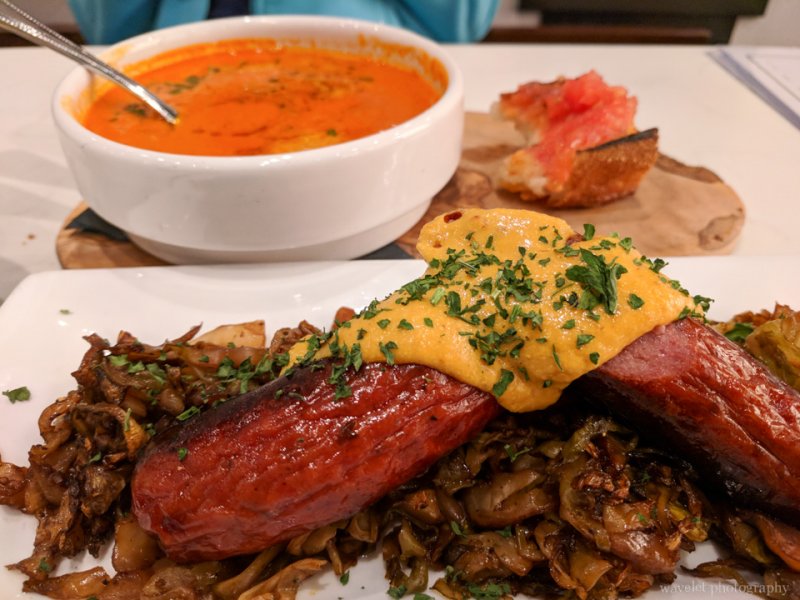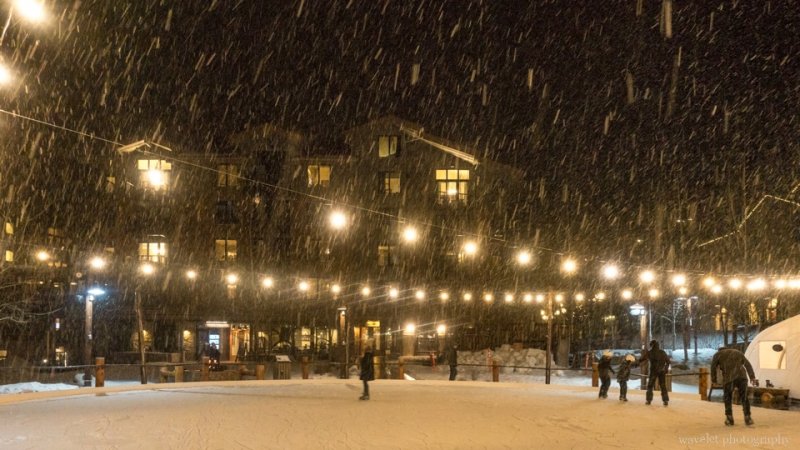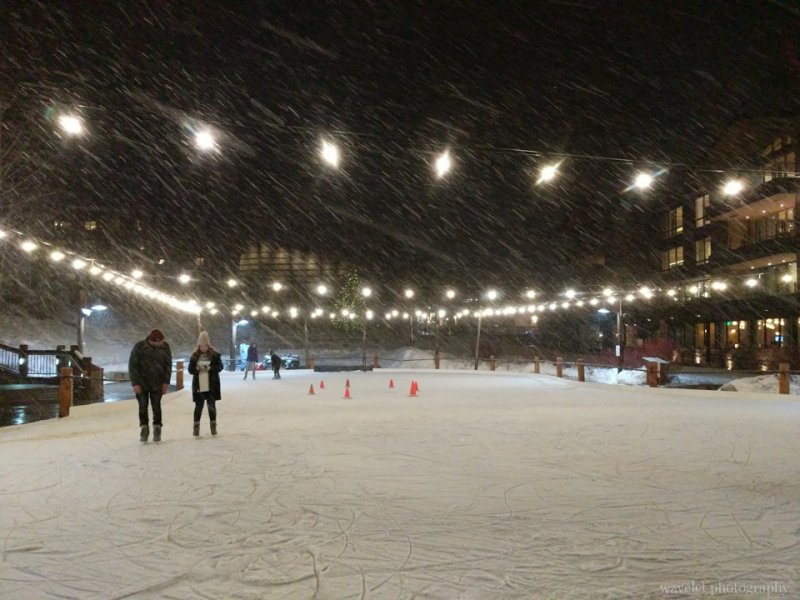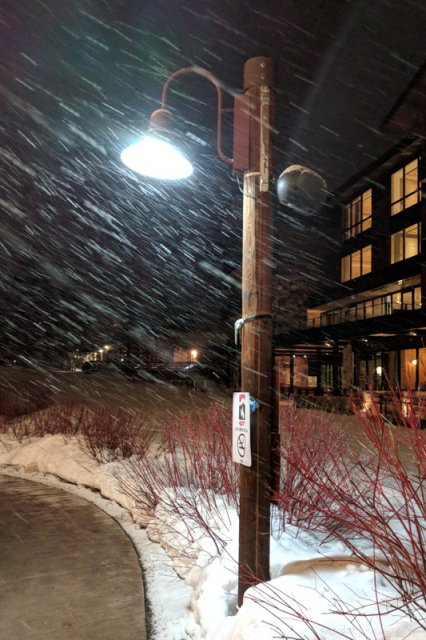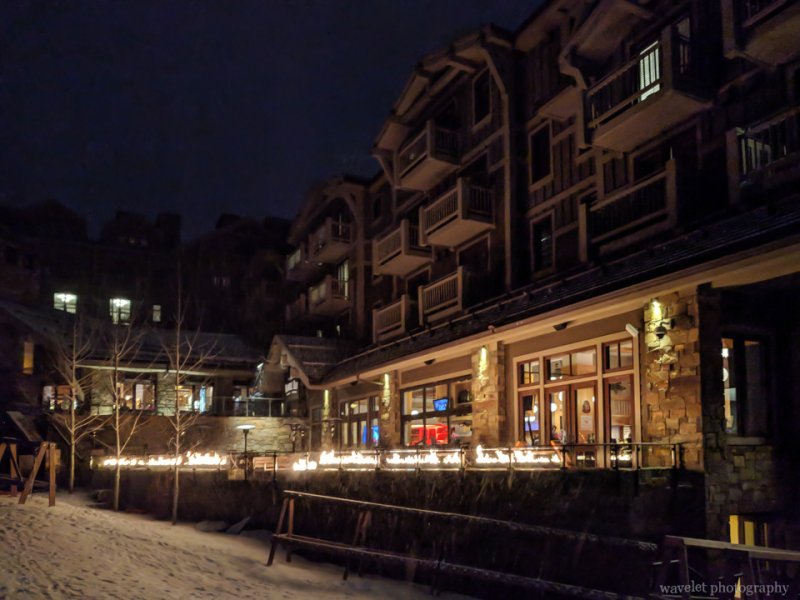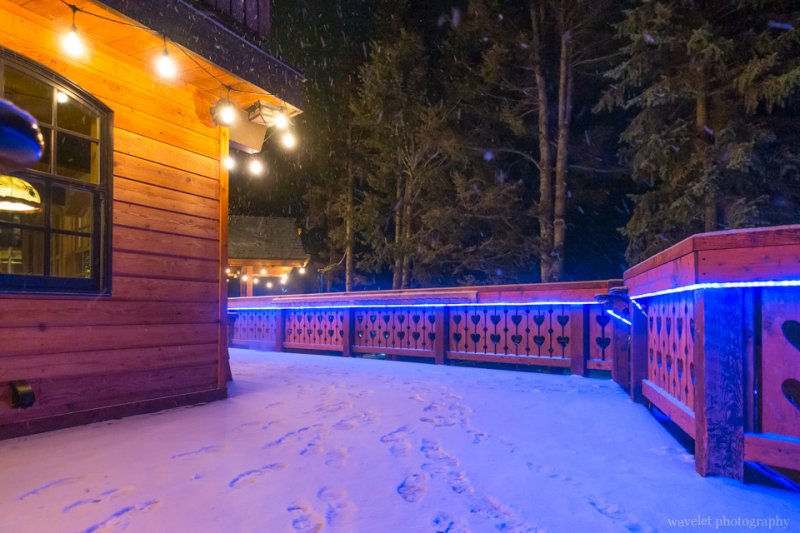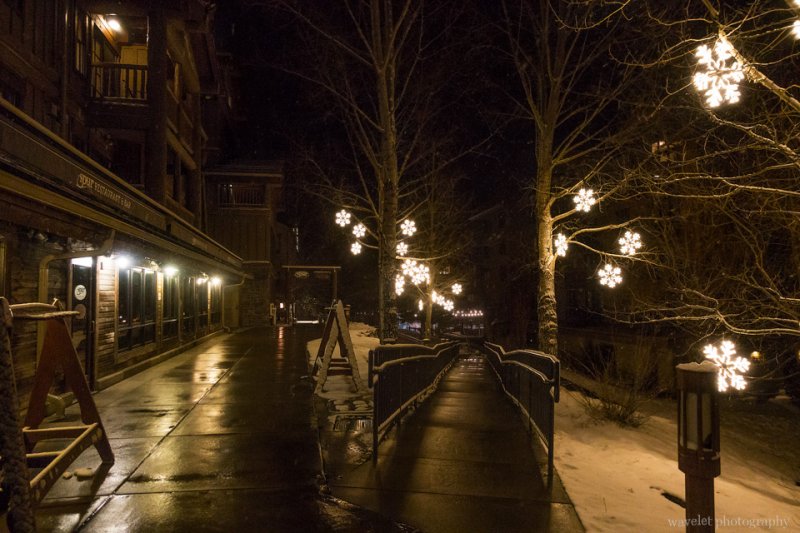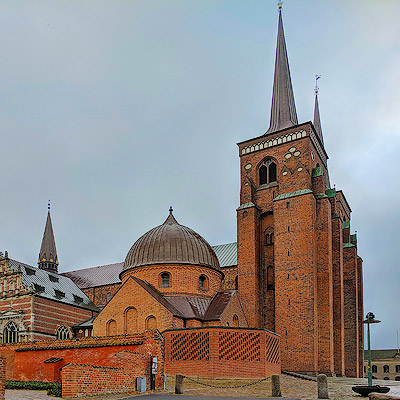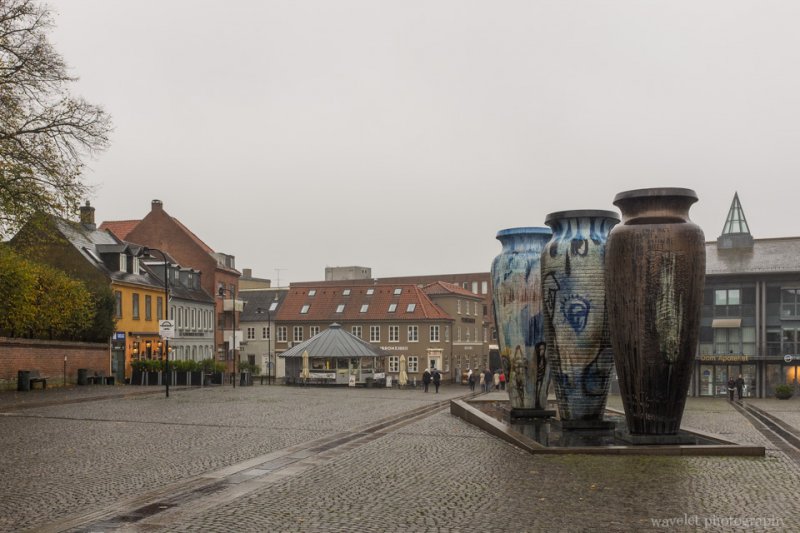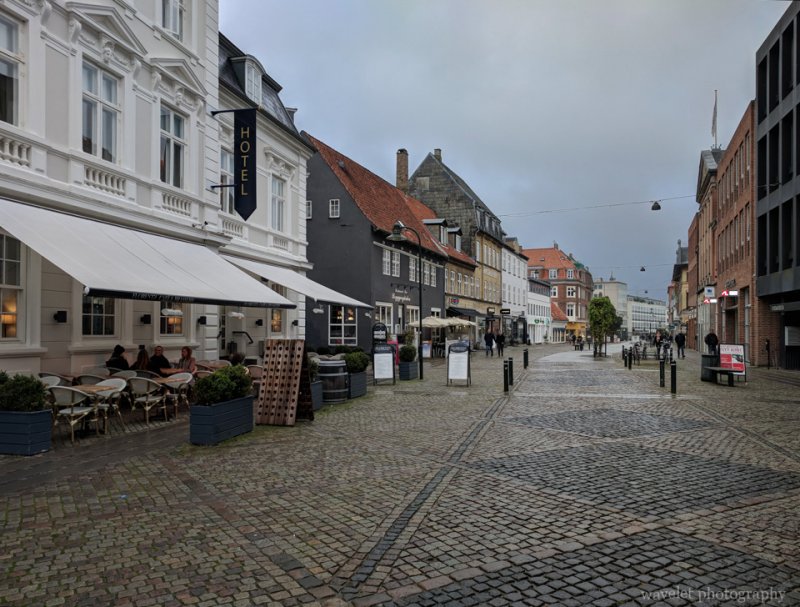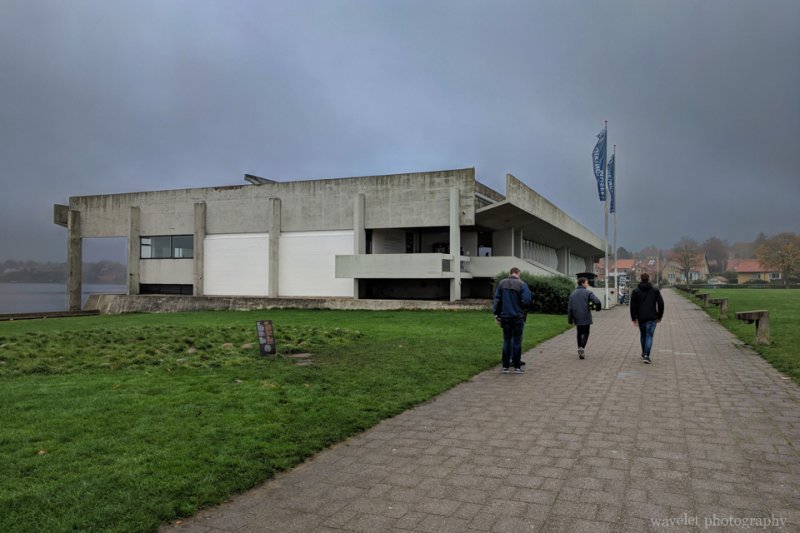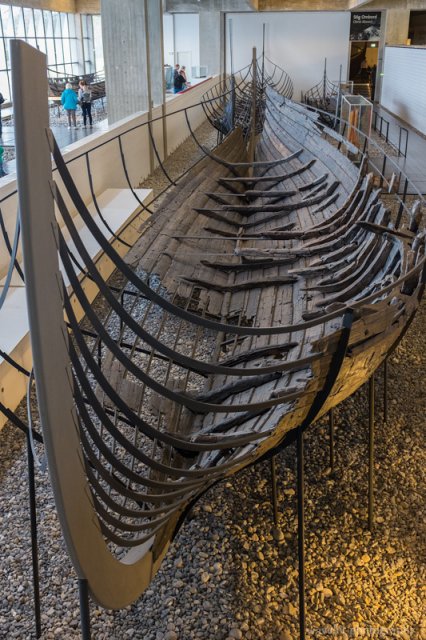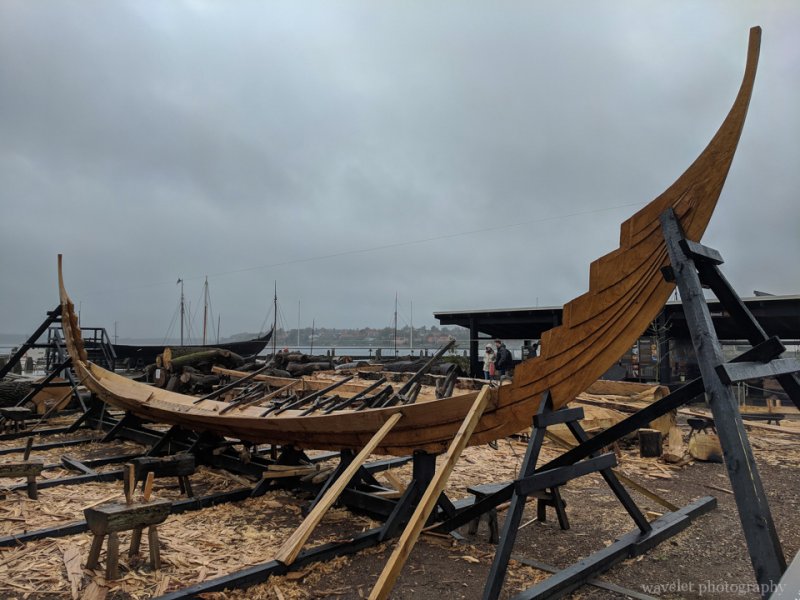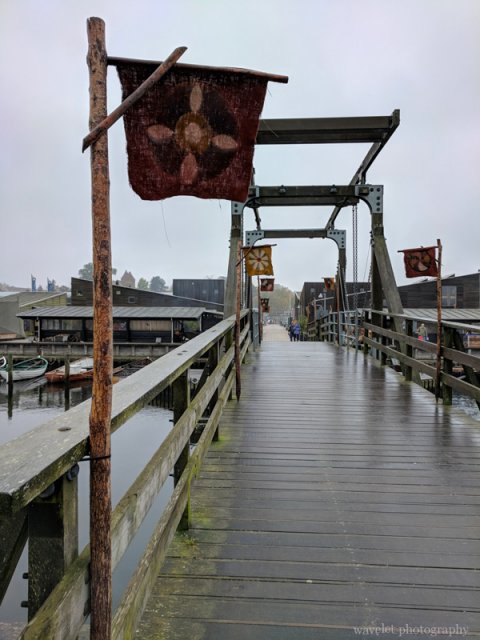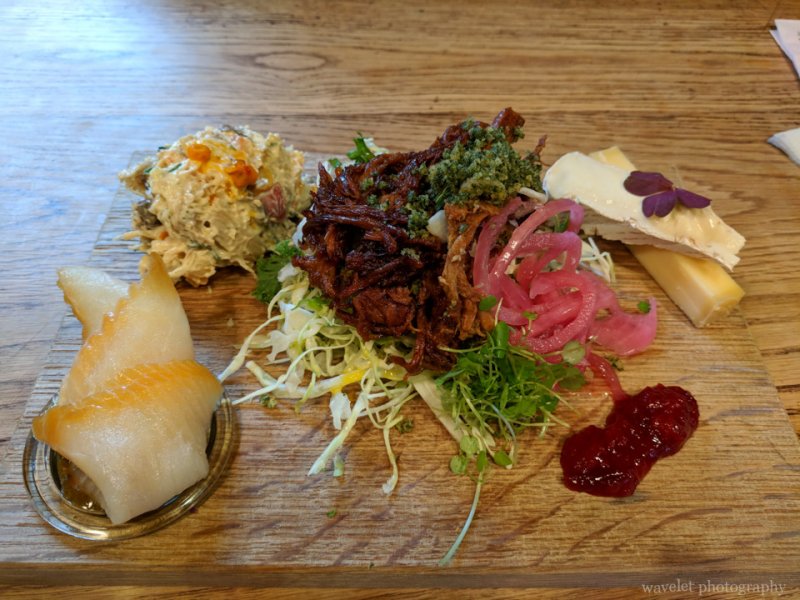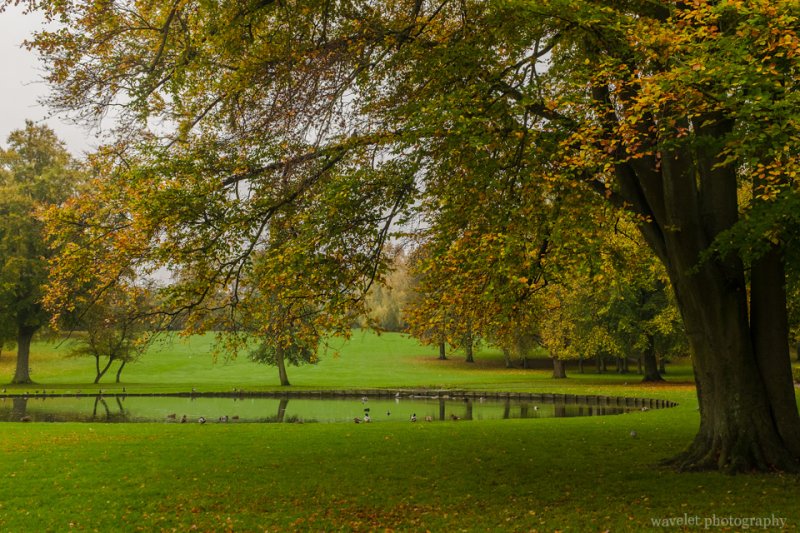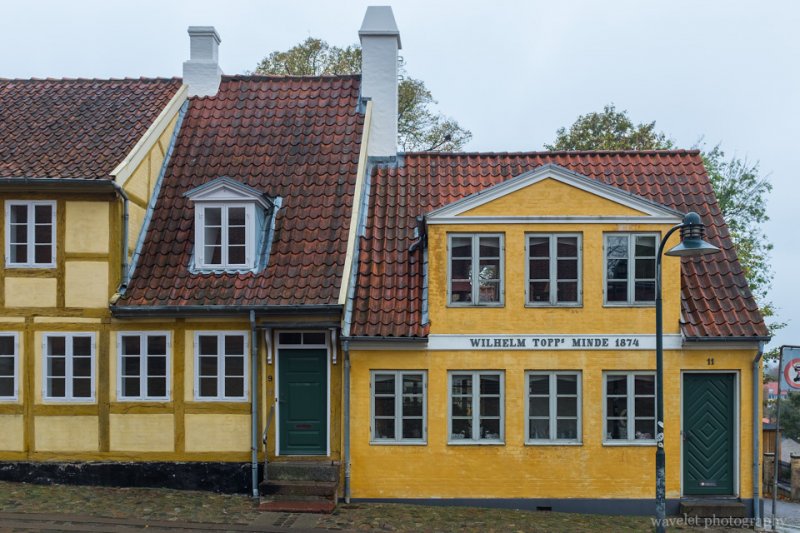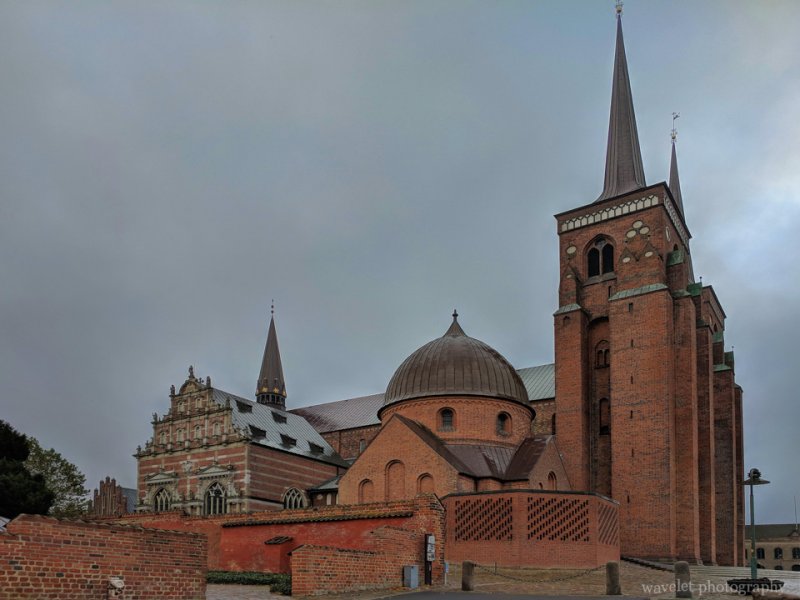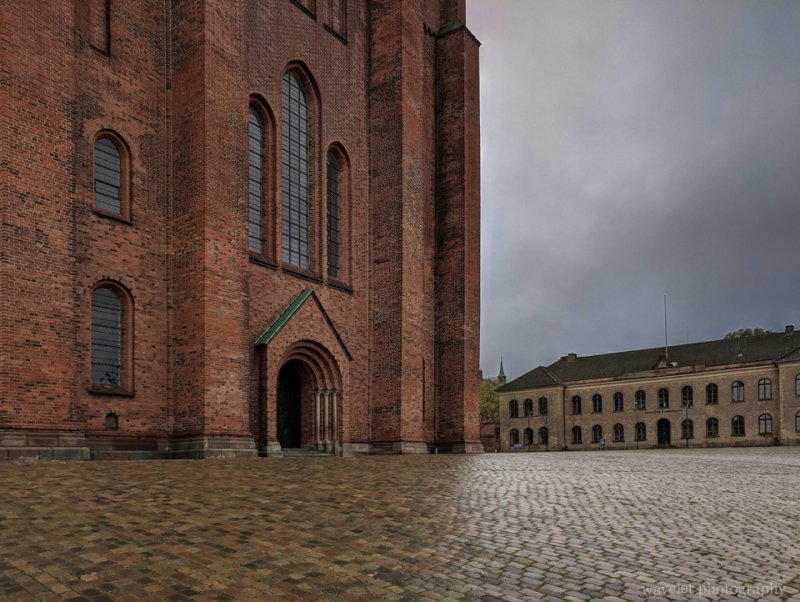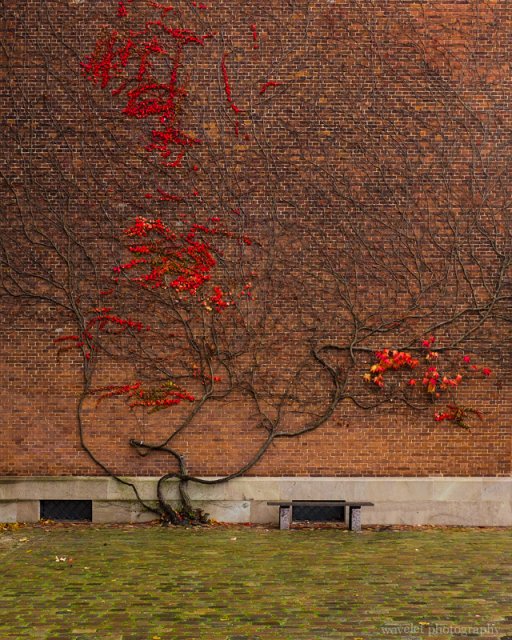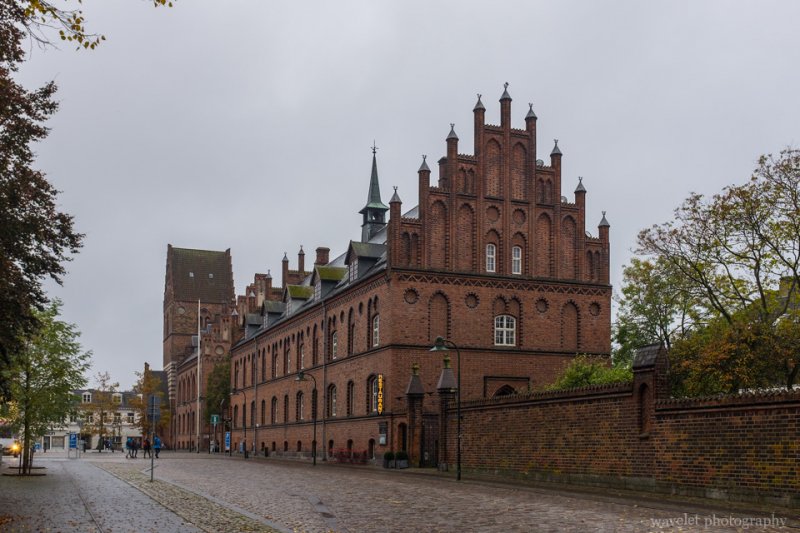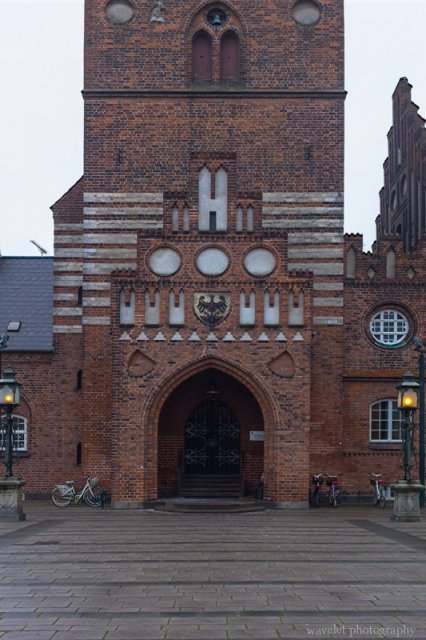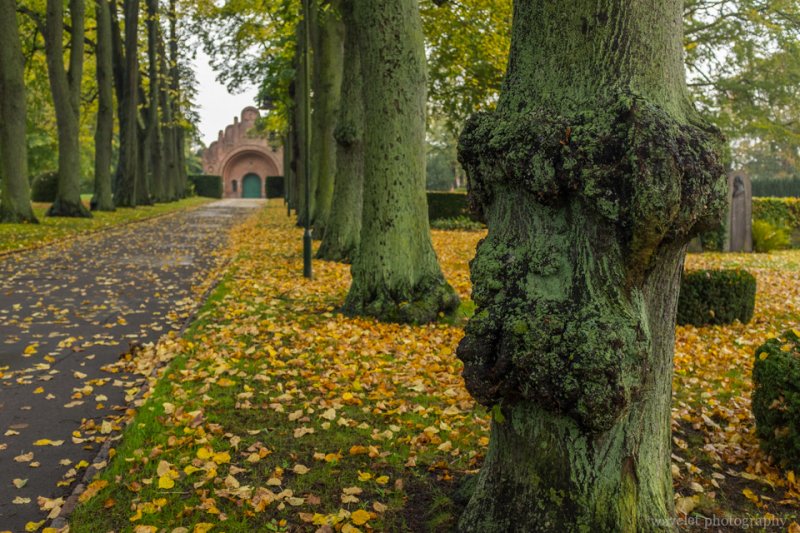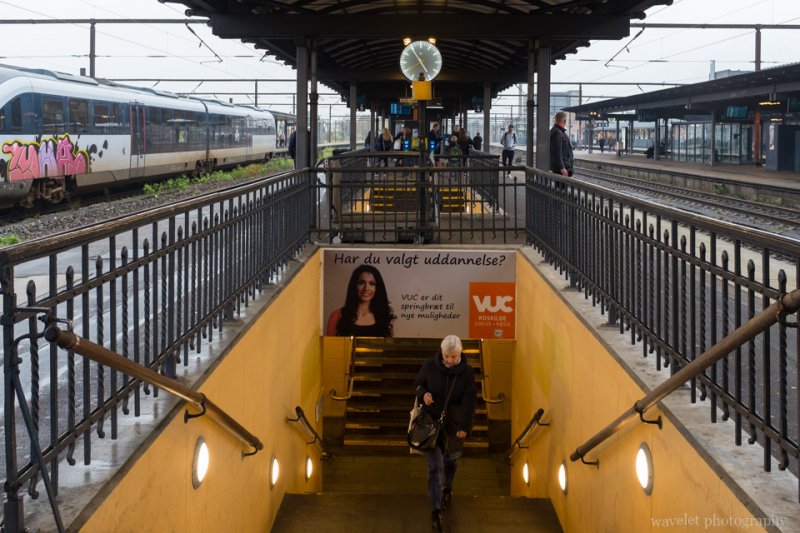Galápagos – Tortoise Ranch
2018.6.29
Galápagos means “Island of the Tortoise” in Spanish, and its English name is the Colón Islands. Each island in the archipelago has both English and Spanish names. In the English-speaking world, we call the islands by their English names, but the name Galápagos is just more popular.
Our flight was scheduled to leave at 6:45 a.m., so we woke up at 4 a.m. to leave the hotel and arrived at the airport around 5 a.m. The travel agent had already collected our tickets. The Galápagos Islands are far away from the South American continent and in order to protect the natural environment and control the number of tourists and residents, each visitor to Galápagos has to buy a $20 TCT card and have their luggage checked separately. Probably because it was still early in the morning, there were not too many people in line.
It was raining sporadically during the boarding time, but the plane was on time. Two days ago, it was already midnight and we couldn’t see anything. This time, we were able to see the majestic Andes mountains, the city, the quarry and mining factory surrounded by mountains.
The flight from Quito to Galápagos is via Guayaquil. Guayaquil is the largest city and important port of Ecuador. The Guayas River flows into the Pacific Ocean, forming a vast delta, and the land is fragmented by the river. The plane follows the Guayas River when we are about to land. We can see the river side gradually changes from swamps and farmlands to a densely populated city.
The plane stopped in Guayaquil for about an hour before preparing to take off again. The flight attendant announced that the cabin doors would be closed and that the aircraft would be sprayed with insecticide. This procedure is required by the World Health Organization for all aircraft flying to Galápagos. The spray came out of the air vents and lasted for about a few seconds. We hardly noticed anything, except for the faint sound and a slight smell.
After about two hours of flight, the plane entered the skies over the Galapagos Islands. The airport we arrived at was on Baltra Island, separated from Santa Cruz Island by a narrow channel about 400 meters wide. The sea was foggy as we were about to land, and we could slowly see scattered small islands on the sea surface. Baltra Island is very small, bare and almost devoid of vegetation. It is mainly used as an airport.
After getting off the plane and buying the $100 per person ticket to the national park, our journey in Galápagos officially began. Tourists on the same yacht gathered in front of their buses. Our guide, Marco, arrived as well, a sturdy man who spoke excellent English. Marco was a great guide and the key to our perfect trip.
The embarkation dock for the cruise was Puerto Ayora on the south shore of Santa Cruz Island, Baltra Island is on the north shore and we had to cross the whole island. After disembarking the ferry, we started heading towards the high land of Santa Cruz Island. Looking at the map, this section of the road is a straight line. As we gained altitude, the surroundings changed from bare volcanic rock and low Mangroves to a dense “forest” of vegetation. The landscape of the galápagos Islands follows a similar pattern: the low elevation by the seaside is characterized by sandy beaches and arid, barren land with only low vegetation such as cacti and mosses; inland, the presence of mountains makes it easy for rain to fall, which can support lush vegetation.
A few steps from the parking lot, a huge deep crater appears in front of us. The pit crater is approximately oval in shape, with a diameter of about 150 meters on the long side. The walls of the pit are straight up and down, almost perpendicular to the ground, and from the four walls to the bottom of the pit are covered with vegetation. It is inaccurate to call it a crater, because it is not created by a volcanic eruption.
The volcanic activity did not stop after the volcano erupted to form the island exposed to the sea. The lava flows along the gaps in the rocks. The lava on the outside is slowed down by the rocks and gradually cools and solidifies; while the lava on the inside flows faster, and the gaps gradually expand over time. When the lava runs out, a hollow tunnel is formed. Such tunnels are quite common in the highlands of Santa Cruz Island. After thousands of years of corrosion, some of these underground tunnels have collapsed and formed the deep crater in front of us.
Los gemelos has two deep craters, on either side of the road. Marco led us along the trail, explaining the flora and fauna around us along the way. The most amazing thing was the plants around us that were nearly 10 meters tall. Technically speaking they are not trees, but a type of dandelion. Their seeds were carried here by the wind and took root among the dry volcanic rocks. As the terrain of the volcanic island rose and precipitation increased, the plants were able to survive. With no competition, the otherwise common low-growing daisy plants can grow more than ten meters tall, covering most of the uplands of the high elevation islands, including Santa Cruz Island, and forming dense forests.
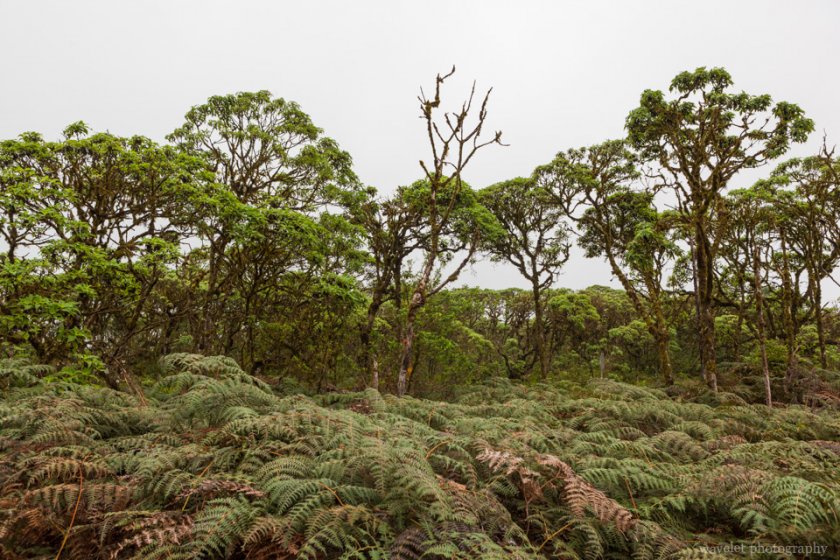
Leaving Los gemelos, our next stop was the highlight of our trip on Santa Cruz Island, a visit to a tortoise ranch, Rancho El Manzanillo, and once we got off the main road, we could already see the turtles walking slowly along the dirt road. It’s called a tortoise ranch, but it is not fenced, the tortoises can wander in and out unhindered. This farm is the partner of the Charles Darwin Foundation.
Upon entering the farm was a large open shed that could accommodate 30 to 40 people eating at the same time. Two of us, a family of four from California and an old British couple were the only tourists on the boat. Since there was still room left, a young British couple and a female backpacker from Korea joined us. There were eleven people in total. There are a lot of tourists on Santa Cruz Island. This happens all the time.
A map of the distribution of Giant Tortoise on each island, as well as illustrations of the different forms of different species, is posted on the wall on one side of the hall. The Giant Tortoise is not only the source of the name of the Galapagos Islands, but also one of the most important species that supports the theory of natural evolution. More about it will be covered later.
After lunch, we put on our rubber boots and went out to the open muddy areas to have a close look of the tortoises. Marco had already told us to keep at least two meters away from the wildlife. The tortoises are huge and this distance was enough to get a good look at them. Besides, the turtles were not afraid of people and often walked slowly past us, seemingly unconcerned with our presence.
There is a small pond in the middle of the open area, probably from the rainwater gathering. We were in the center of Santa Cruz Island, about 400 meters above sea level. July is the dry season on Santa Cruz Island, but the highland is often engulfed in fog and the air is moist, which allows the vegetation to grow. This drives tortoises to migrate to higher ground. They like to rest in muddy ponds, sometimes with a dozen Giant Tortoises gathered together, and it is said that being covered in mud protects them from mosquito bites. When the rainy season comes, the Giant Tortoises migrate to lower elevations on the island where the food is more nutritious.
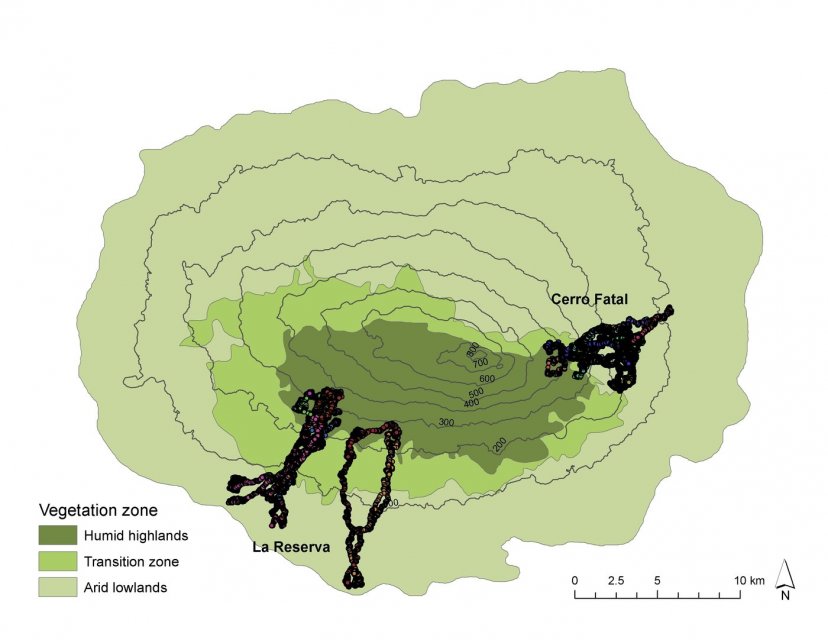
We stayed here for about an hour and could see dozens of Giant Tortoises moving around, including a few huge males. The males were over a meter long and could weigh up to 300 kg; the females were much smaller. June and July is the mating season for Giant Tortoises, and we also witnessed a male chasing a female. It seems that the Giant Tortoises can run pretty fast when they are in a hurry, they can advance about 10 meters a minute.
After leaving Rancho El Manzanillo and driving for another half hour, a small town appeared in front of us. We got off the bus at the harbor, Marco briefly introduce the surrounding area and gave us an hour and a half of free time, then we met at the harbor at 4:30 to board the ship.
I had thought that Galápagos was just a large national park, but in fact the national park covers about 97% of the area, with the remaining 3% inhabited by humans. The largest town is Puerto Ayora, where we are located, with 12,000 residents. Because Santa Cruz Island is located in the center of the entire archipelago, it is the departure point for most tourists and has the most developed commercial and service sector. The second largest town is Puerto Baquerizo Moreno on San Cristobal Island, that is the capital of the Galapagos Islands, with a population of about 7,000 people.
Charles Darwin Street runs along the harbor, lined with restaurants, bars and souvenir stores, and small and large hotels are tucked away in the streets of the city. There are two main ways to visit the Galapagos Islands, one is land-based, where visitors stay in hotels on several of the larger islands at night and visit the sites on the island during the day or take a speedboat to other islands. There are many one-day excursions from Santa Cruz Island to the main islands. The advantage of this way is that it is cheaper and with more choices. In comparison, the cruise option is much more expensive, but it is much more enjoyable as you don’t have to spend hours rushing from island to island and you can visit more distant islands and stop at more attractions.
We walked all the way down Charles Darwin Street to the small fishing port. Fishermen return from their daily fishing trips and land here, where fresh fish are cleaned on the spot and sent to the restaurants. There are always a few seals and pelicans waiting for the fishermen to throw them something. Sometimes fights break up for the fish or seals can sneak away fish on the ground. This is probably one of the most unique sight in town.
We sat down at a restaurant, had a beer and rested for a while before returning to the port. Puerto Ayora was commercialized, but you can always found a few Marine Iguana on the roadside if we looked down; pelicans and grey herons stood on the mangroves by the sea; baby seals would jump on the dock and interact with the visitors; and a group of rays often swim elegantly in the water under the dock. All these remind us that the unique and mysterious natural world is not far away, waiting for us to explore.
But human settlement has also had a real impact on the environment. There have been cases of human pets attacking wildlife. One study found that the human food makes it easier for birds to acquire food. After decades of evolution, the pinches living in Puerto Ayora have significantly smaller bills than their counterparts in the forest.
At 4:45, we boarded the Seaman Journey by the zodiac. For the next seven days, we will sail around the western islands of Galápagos.
